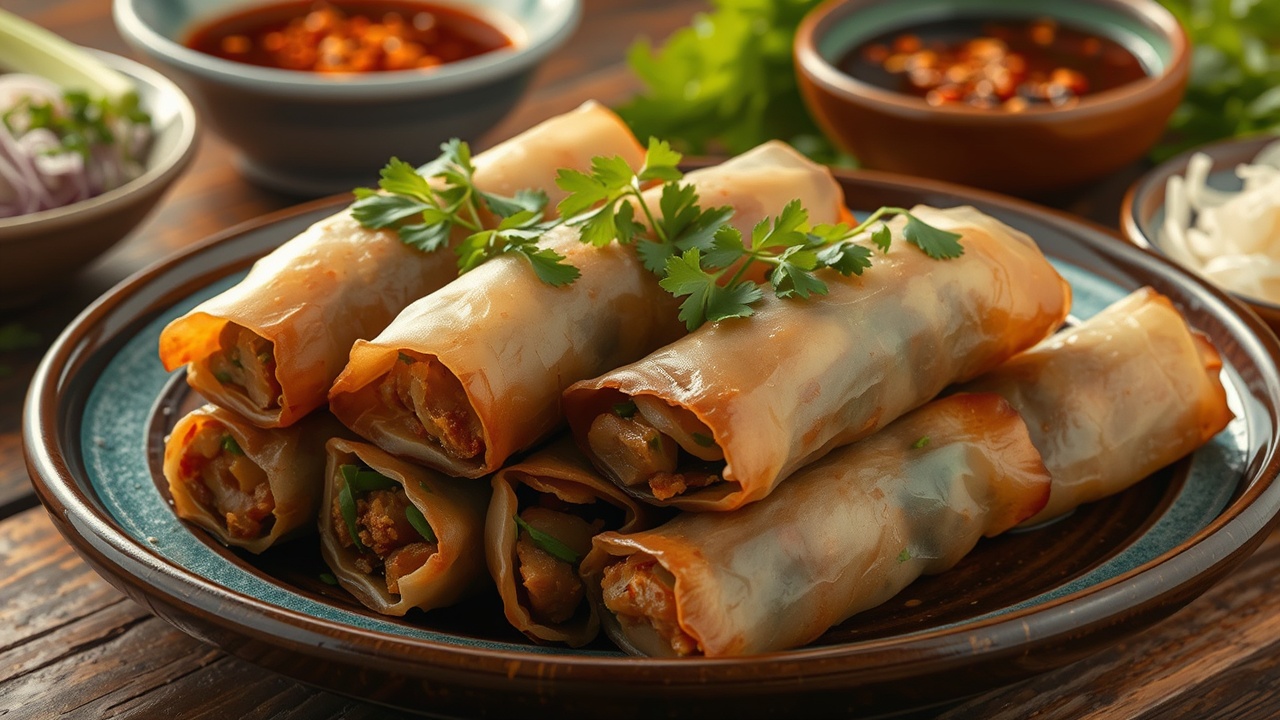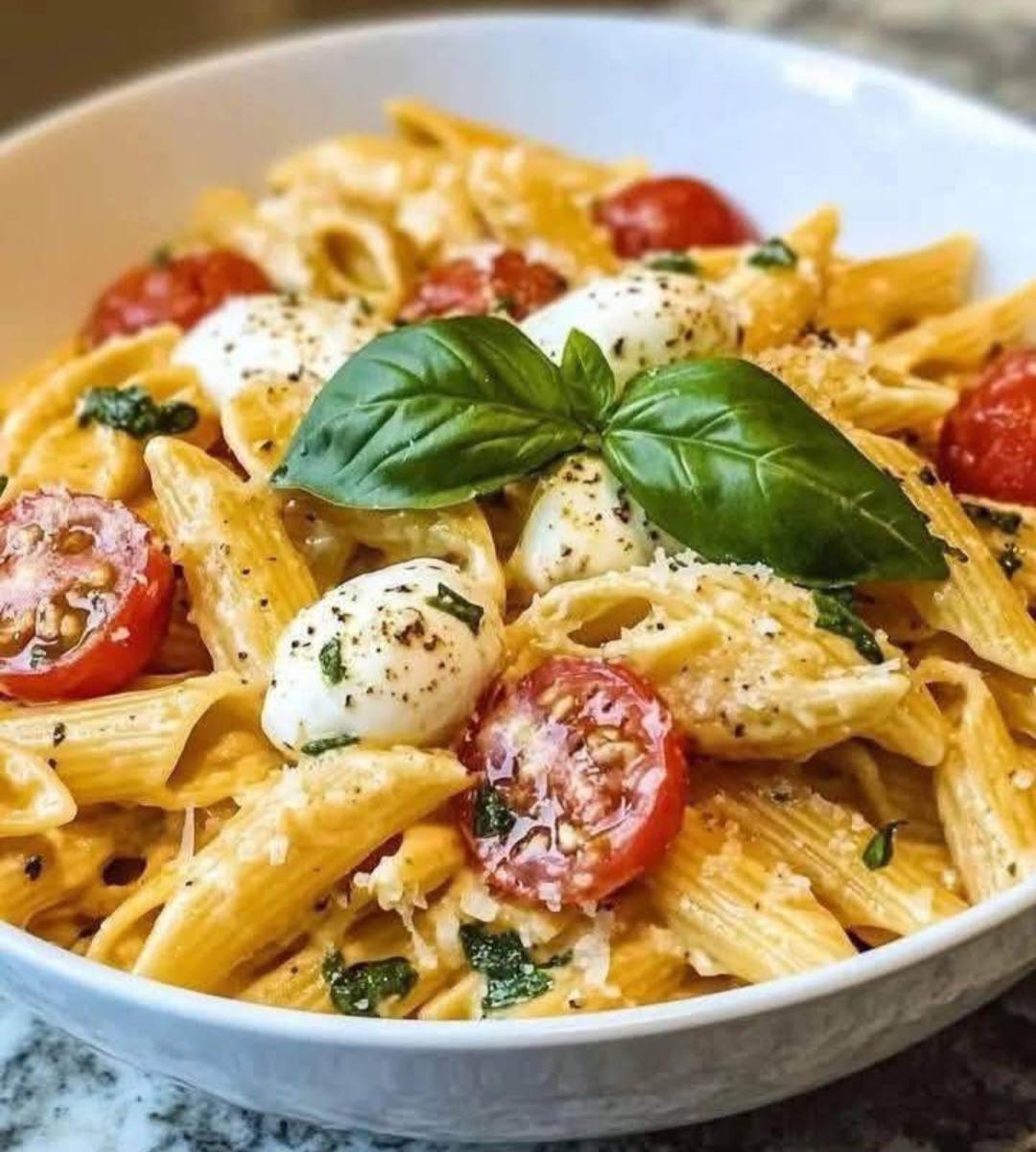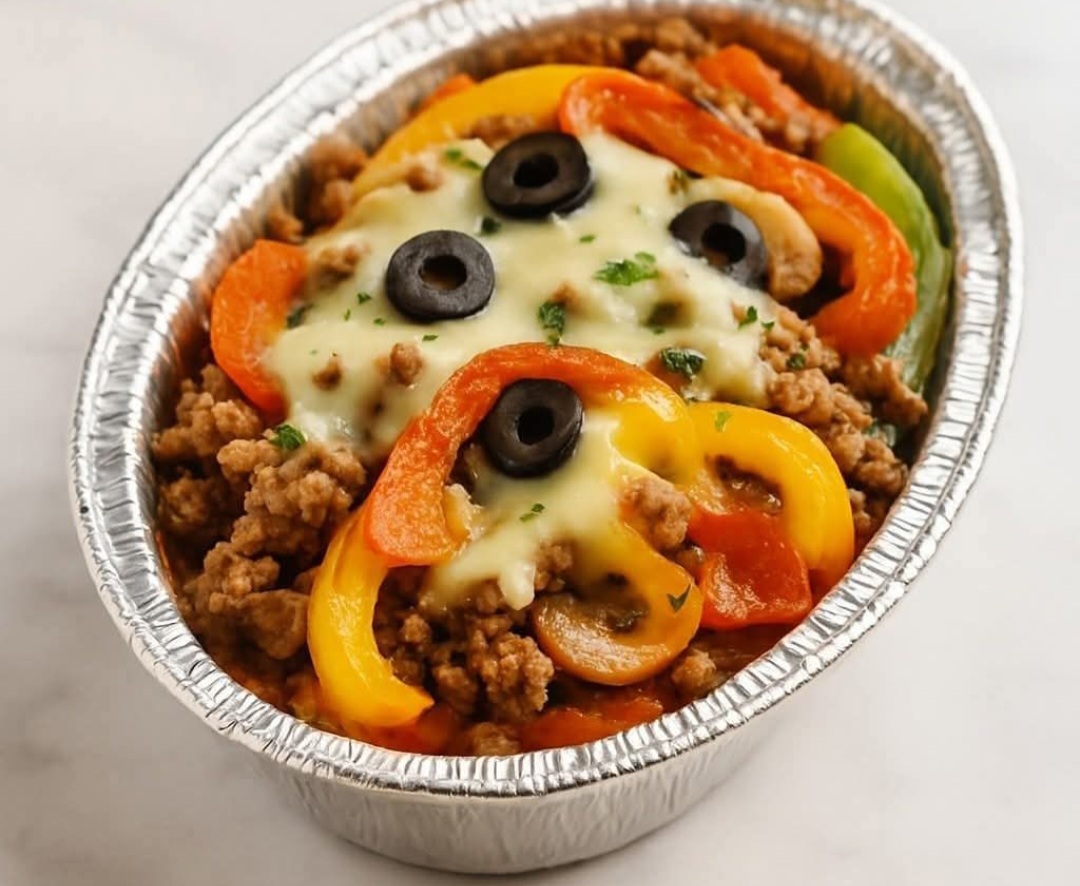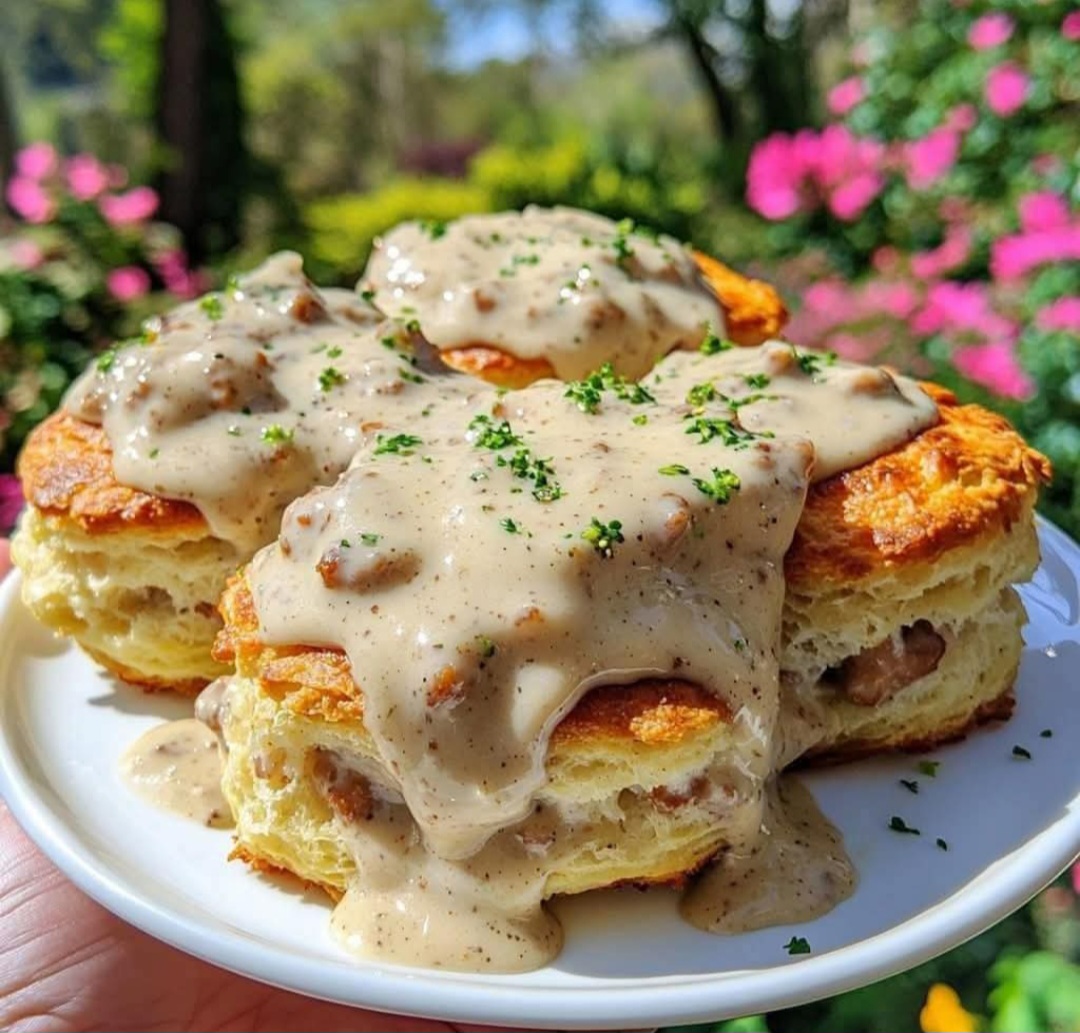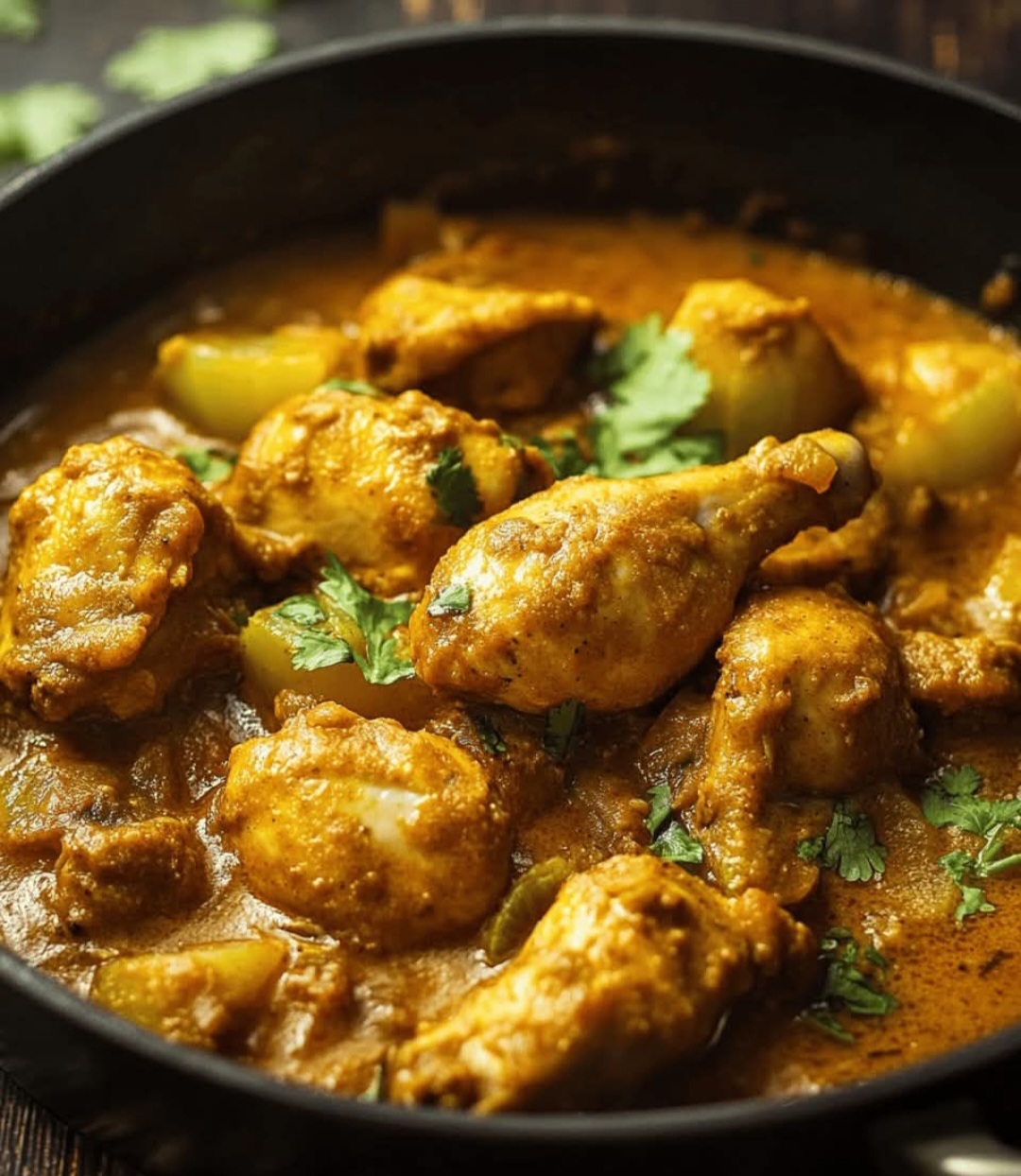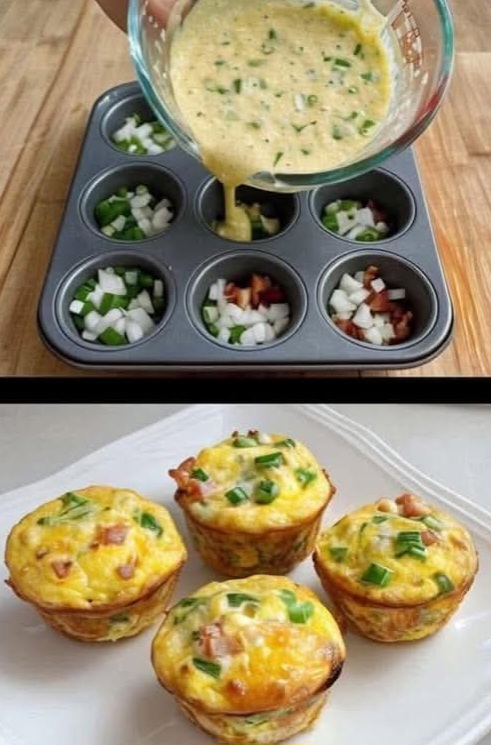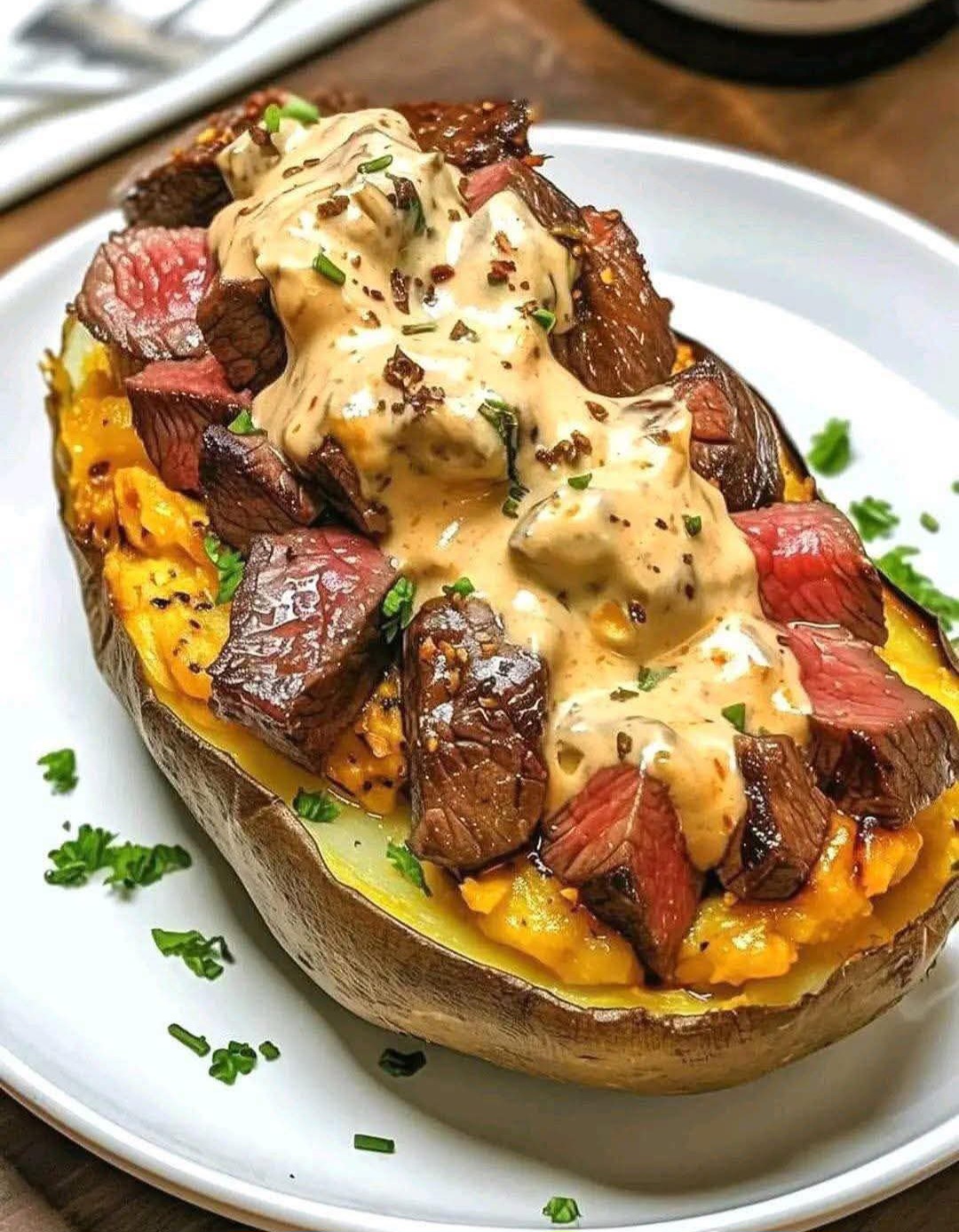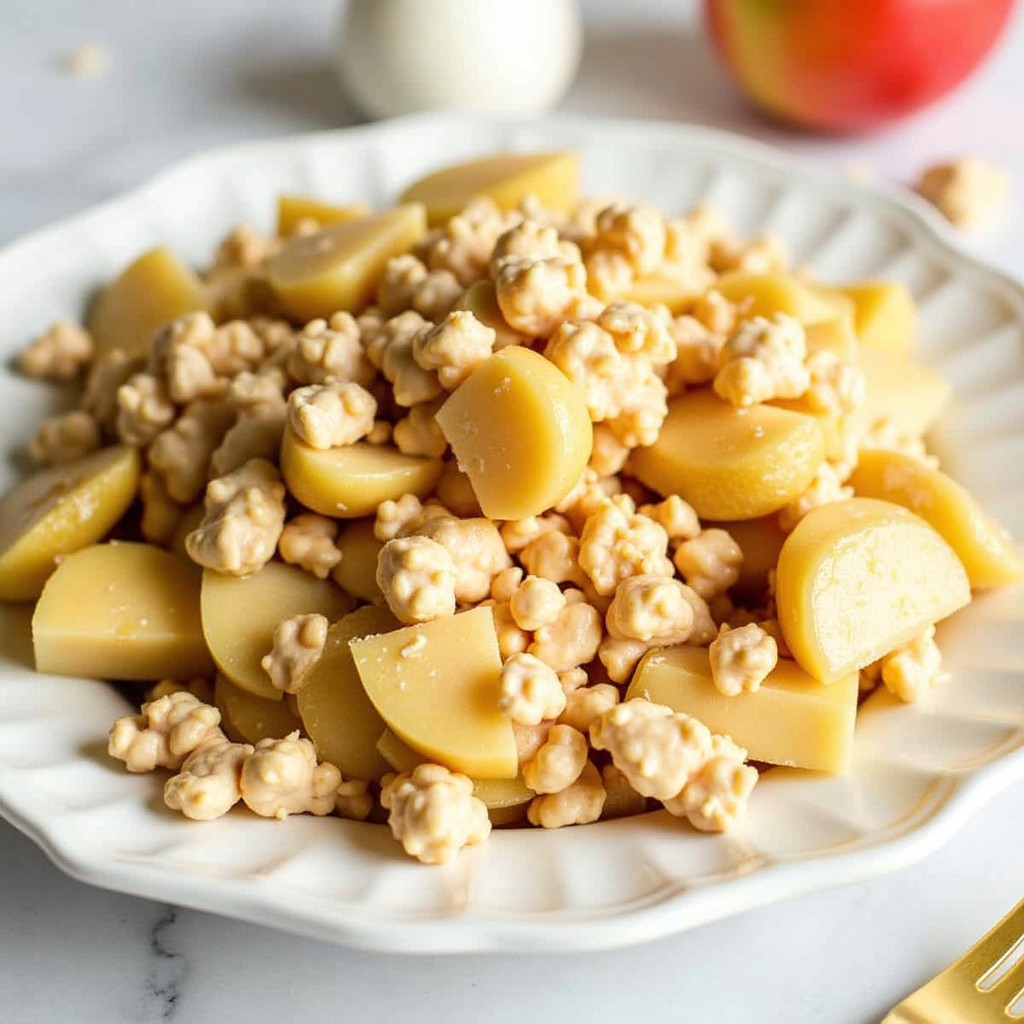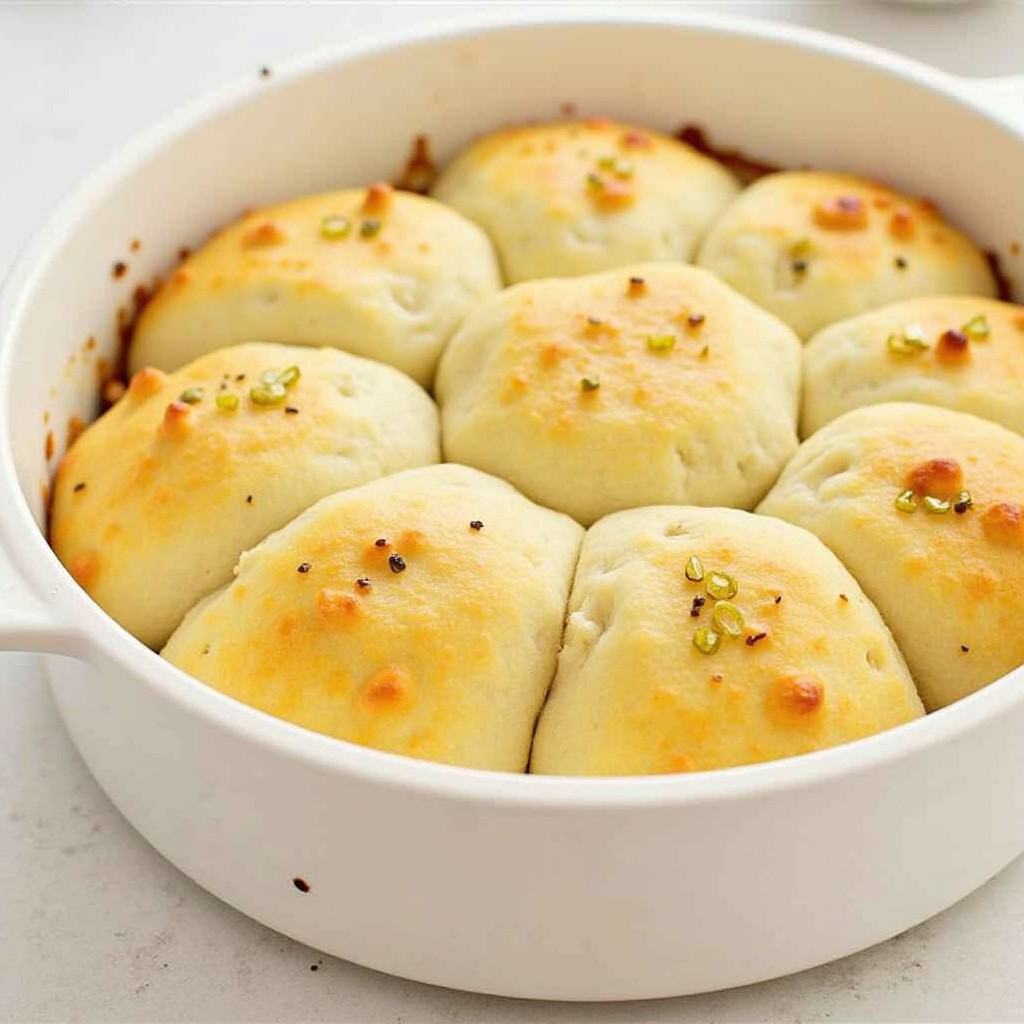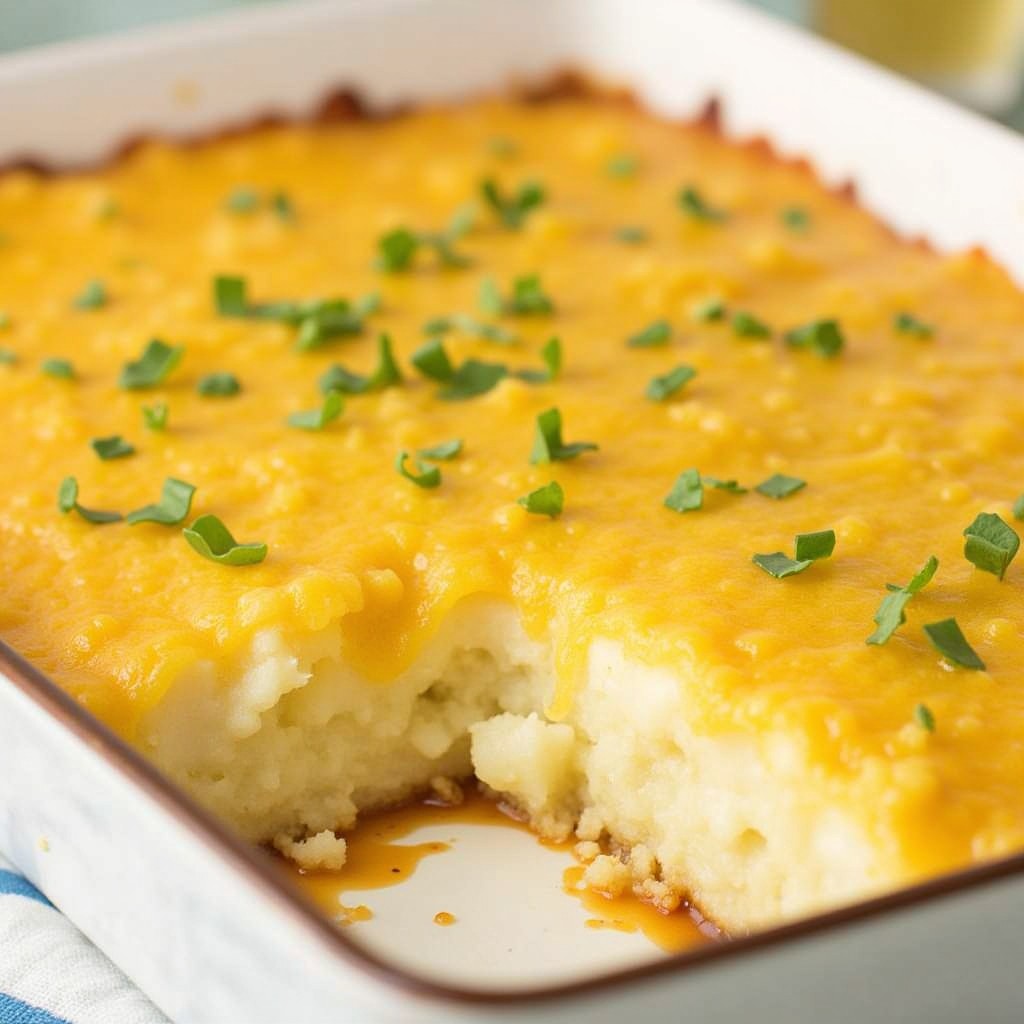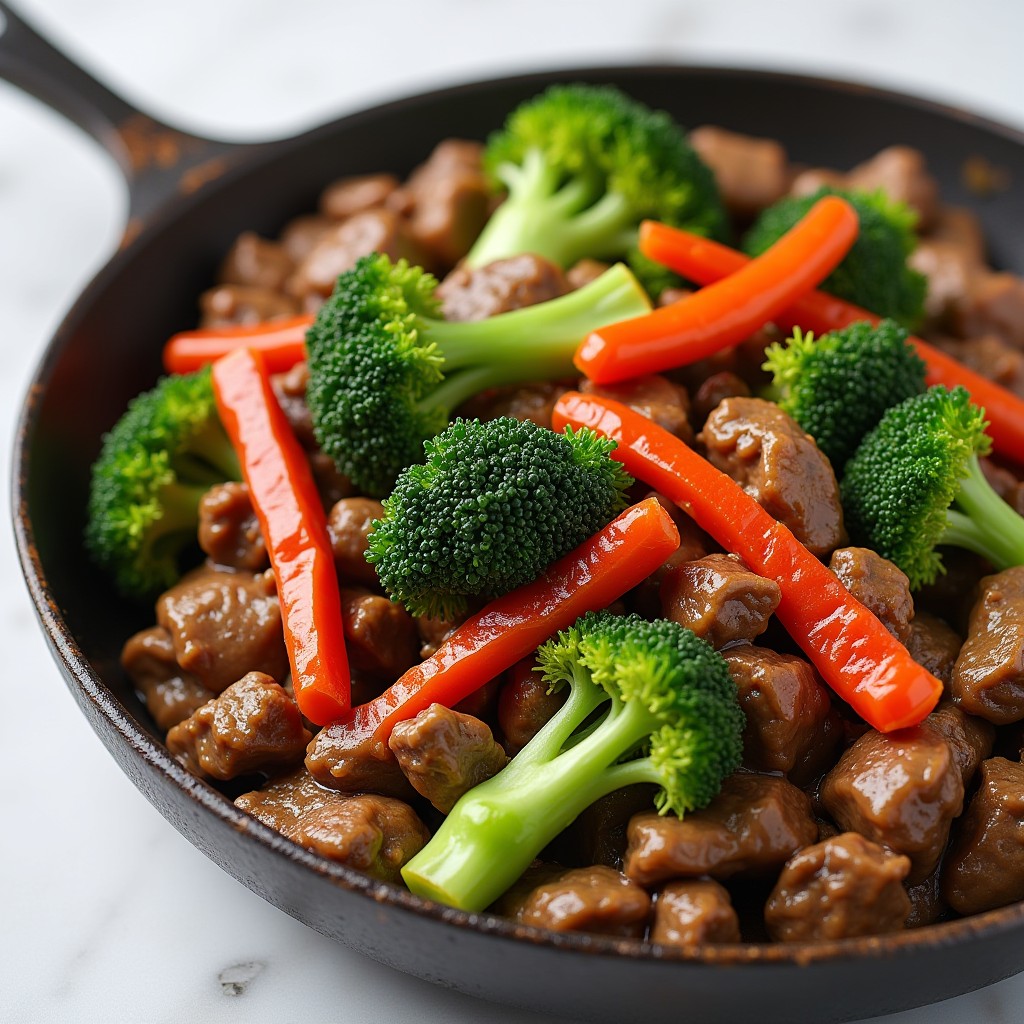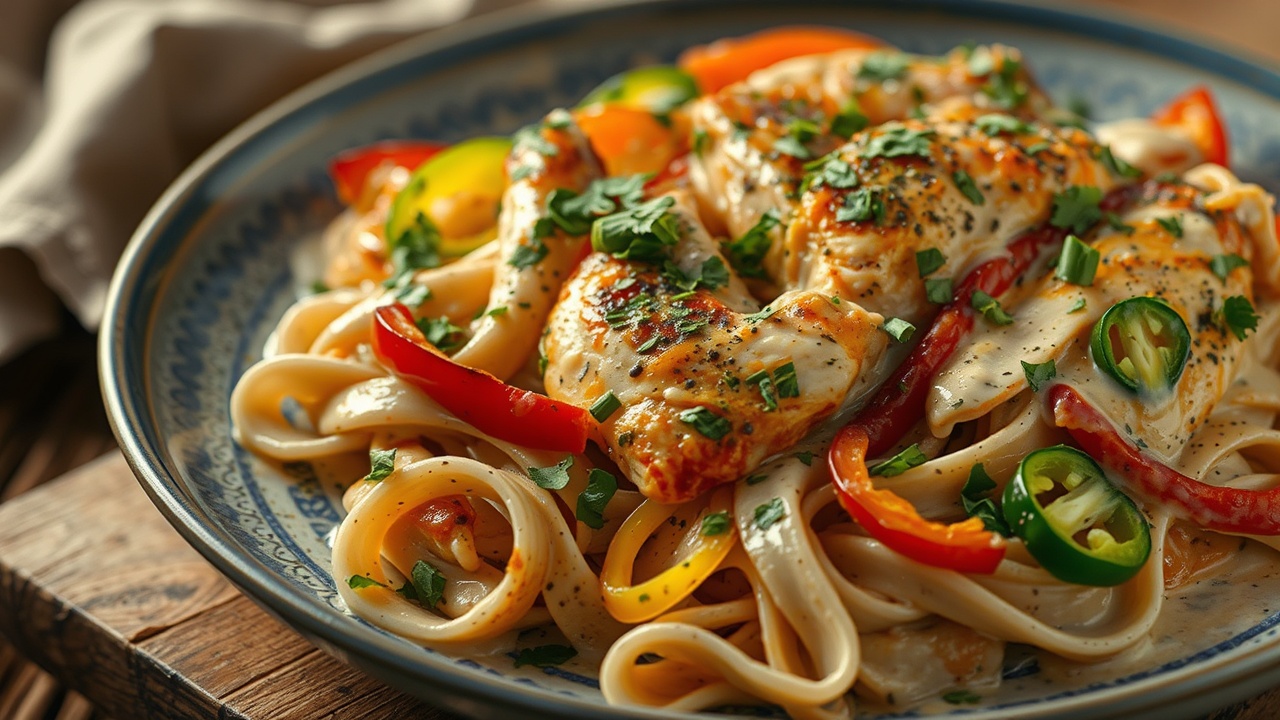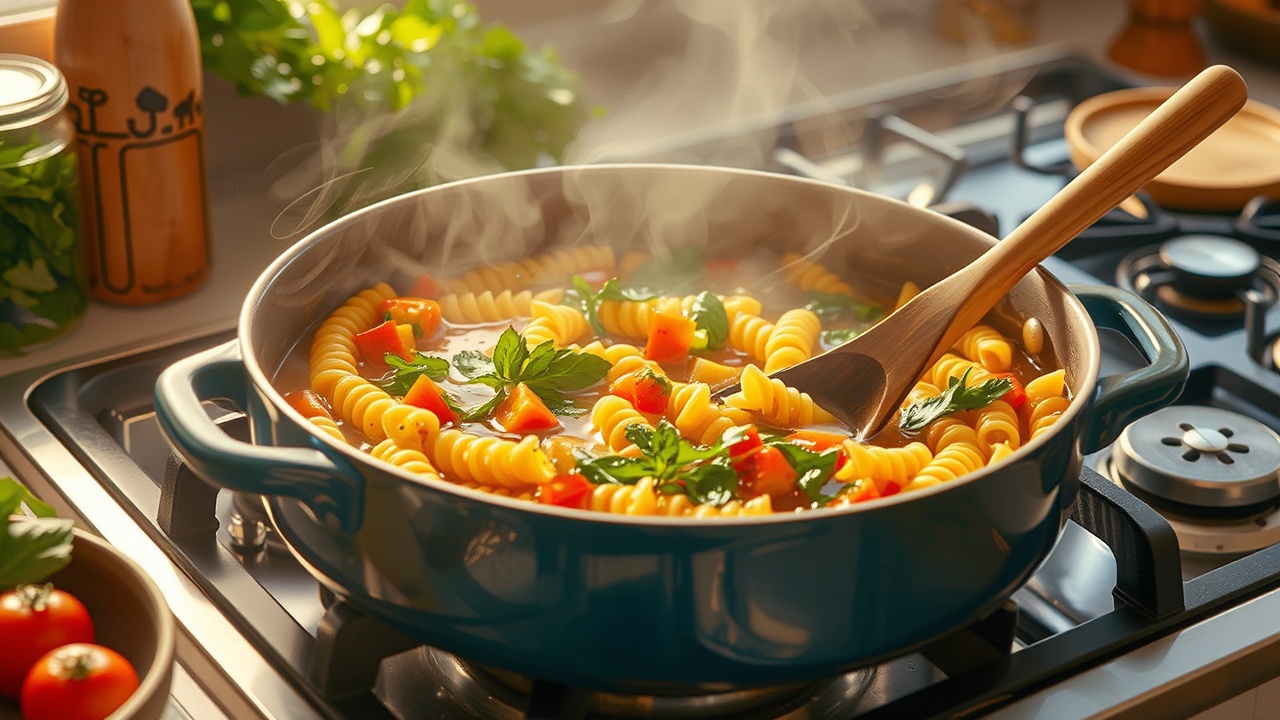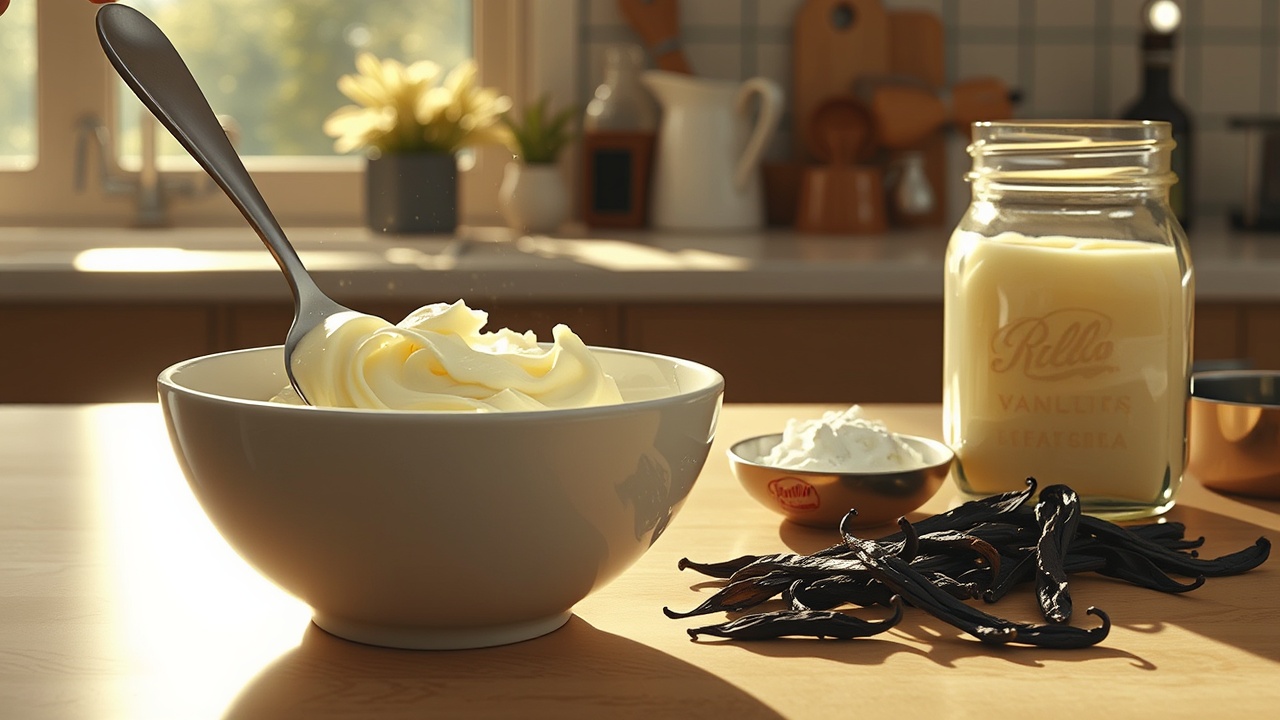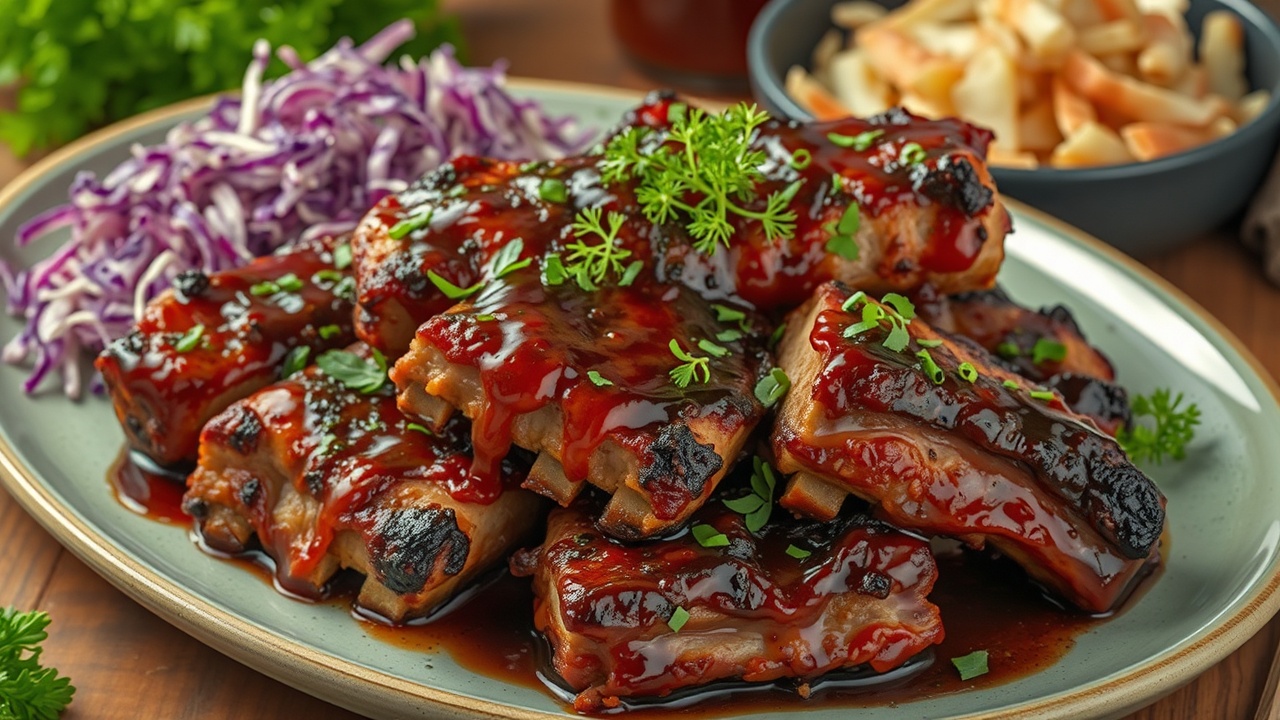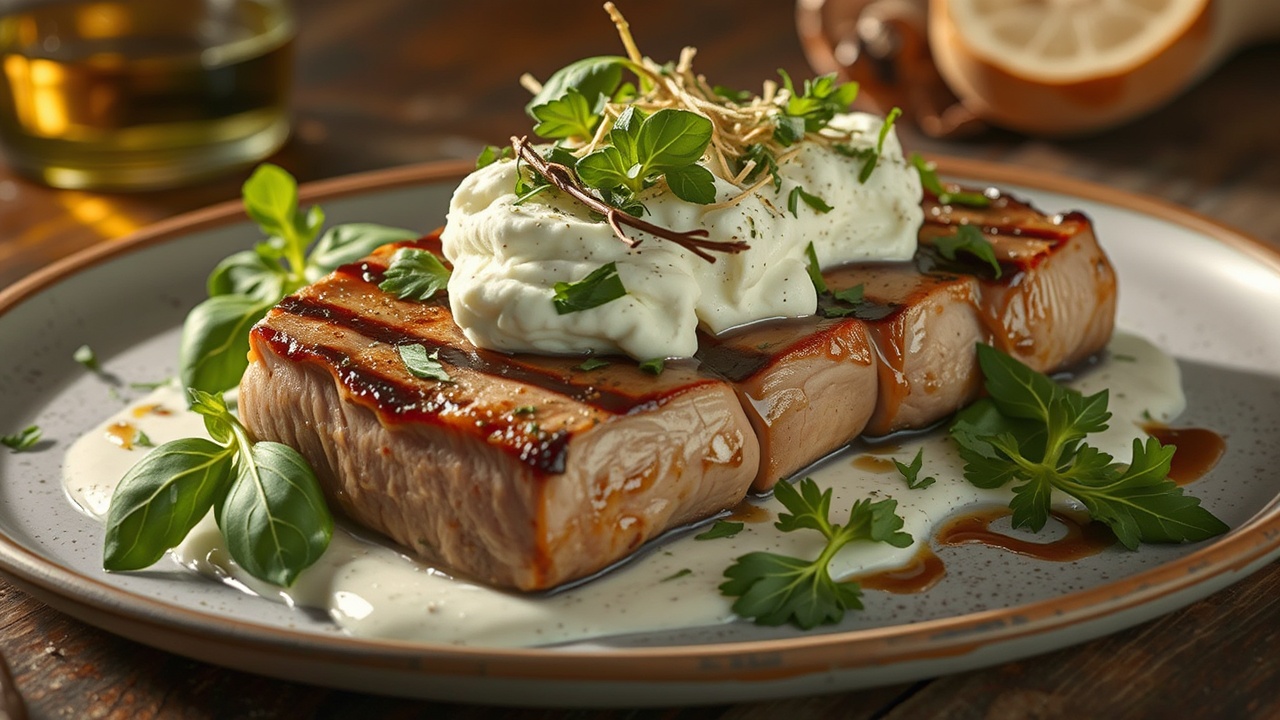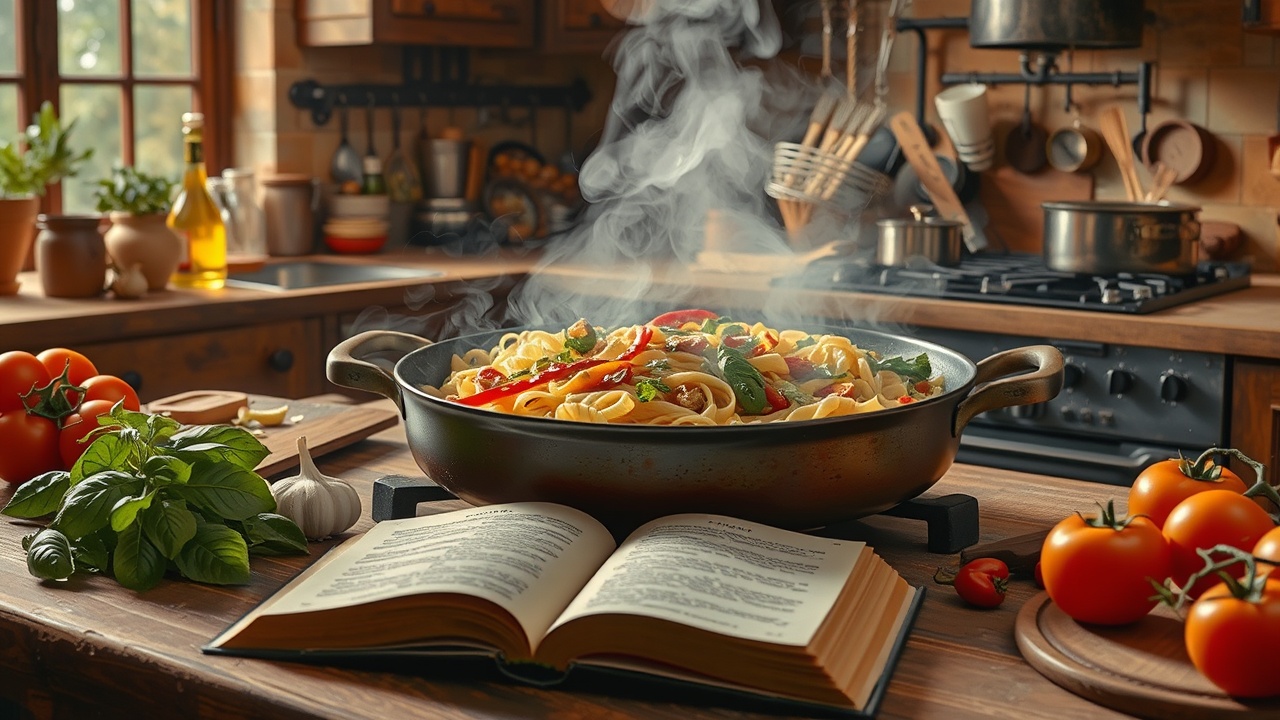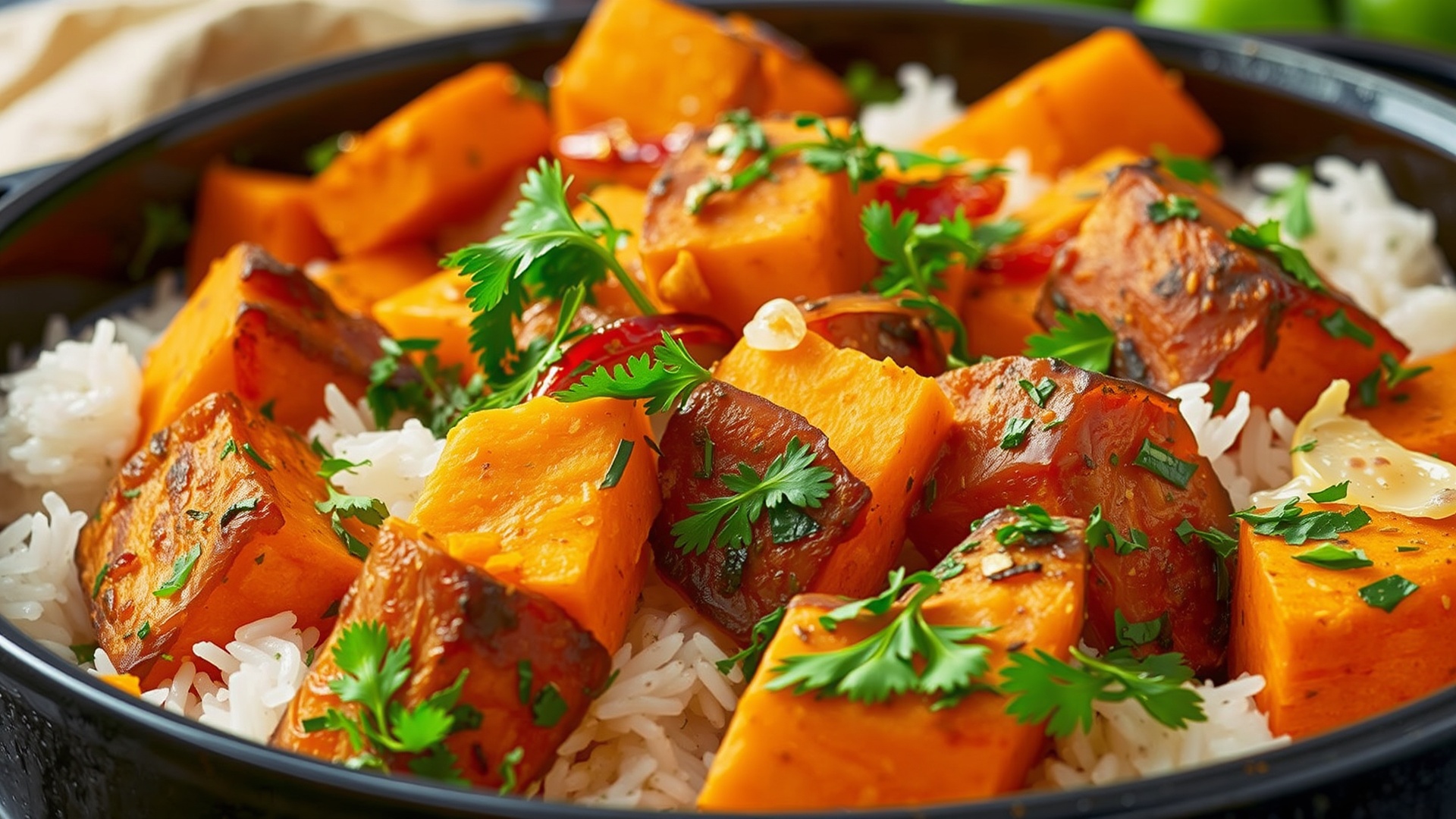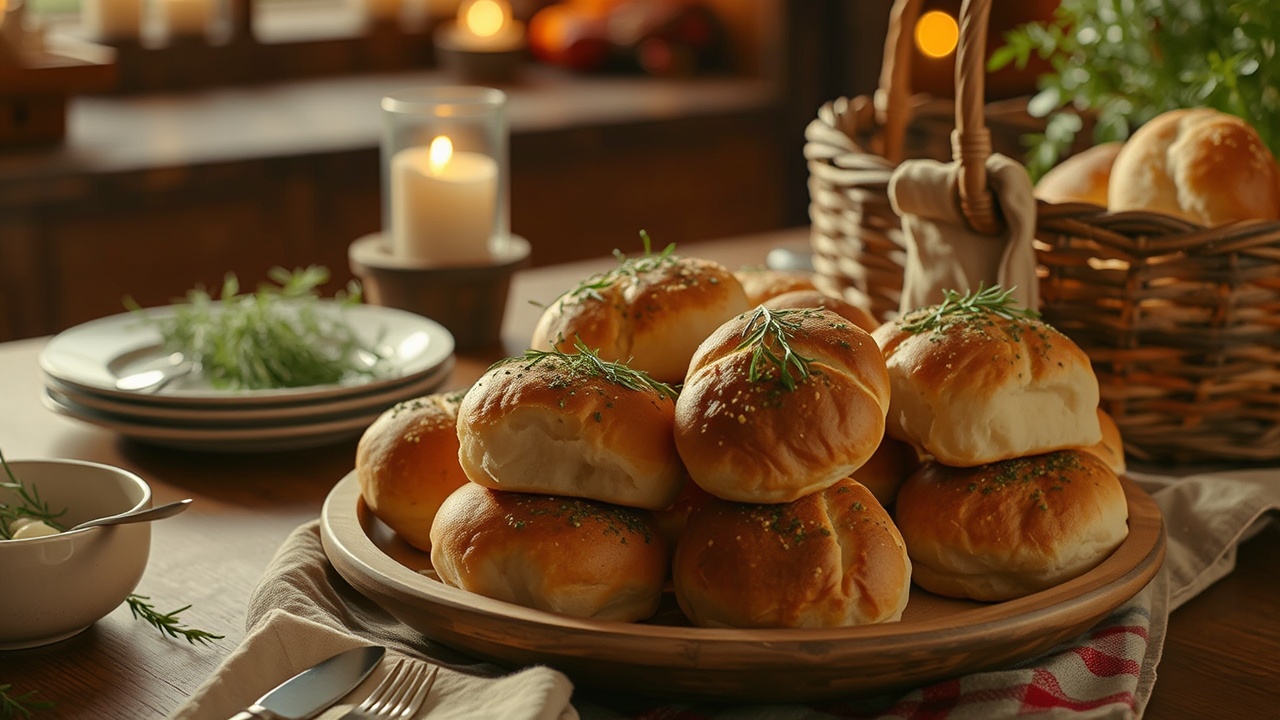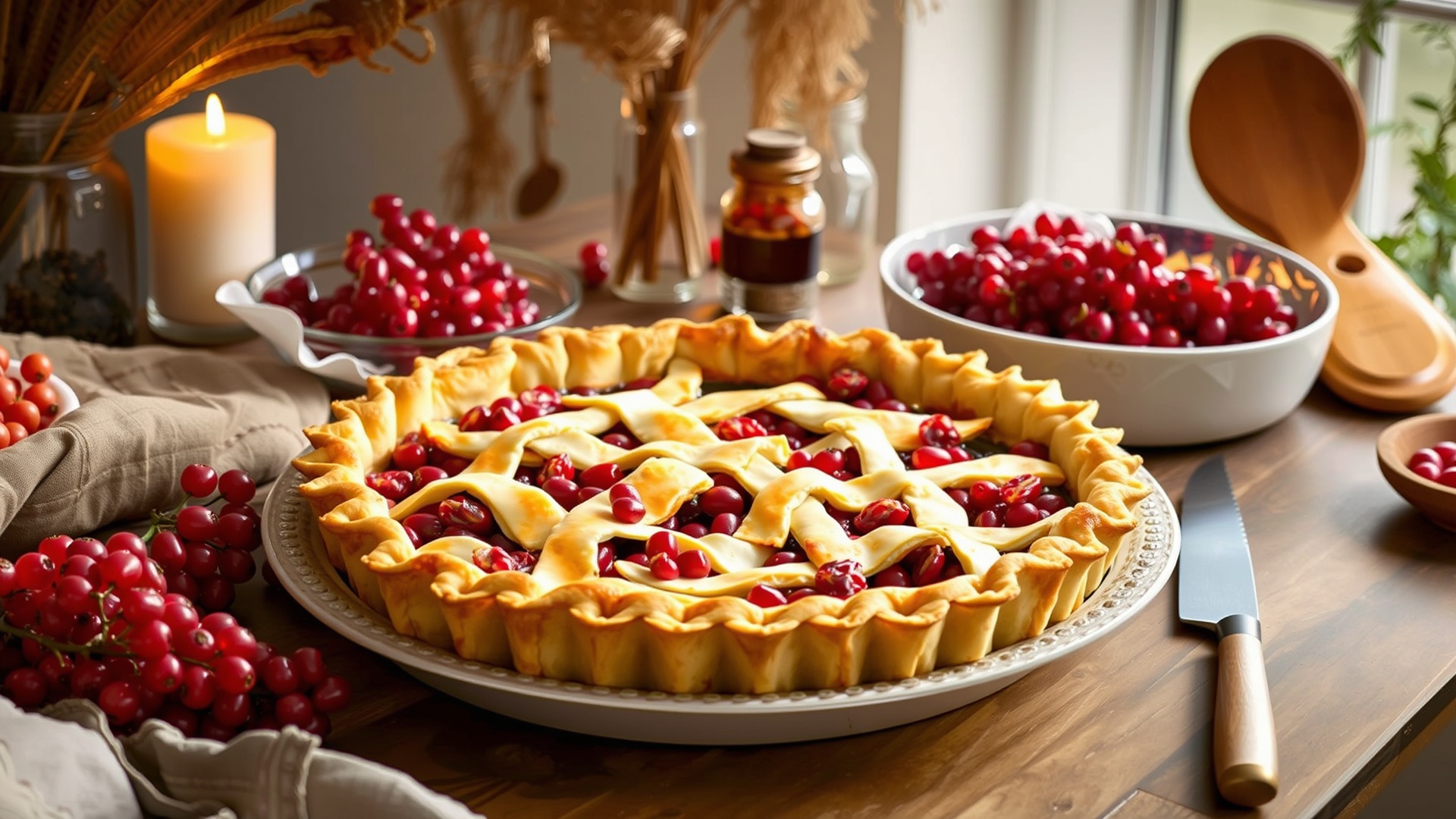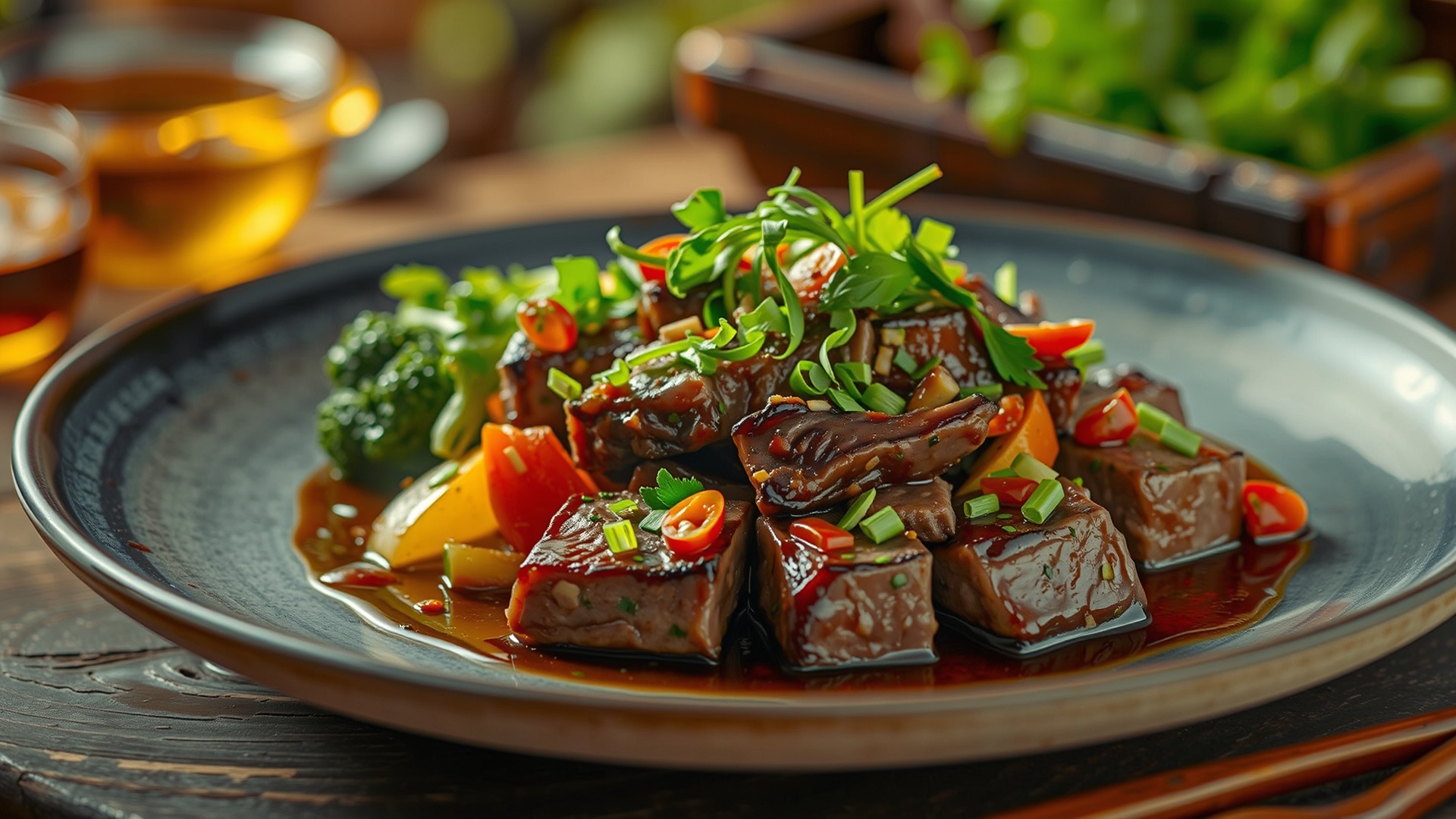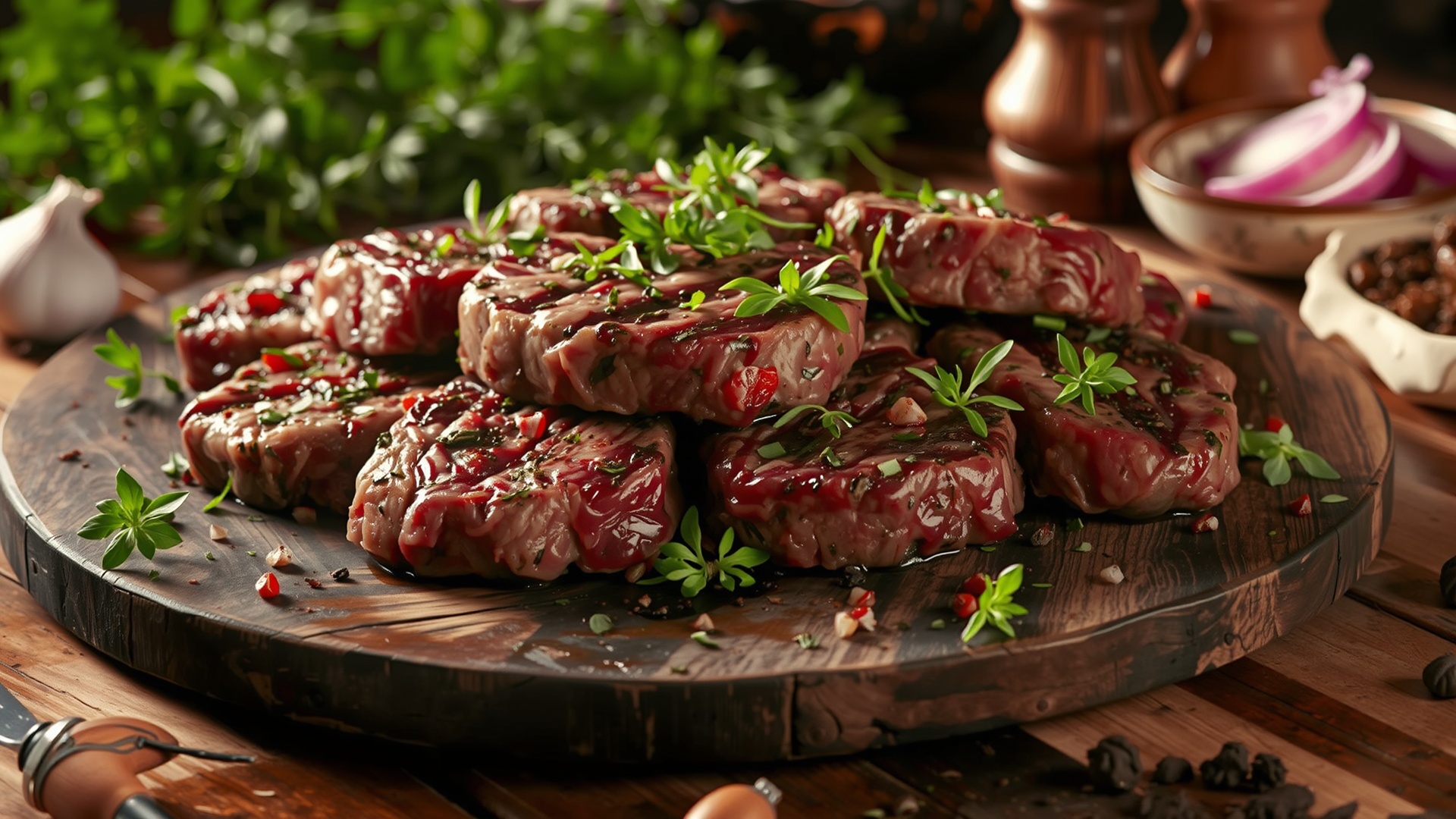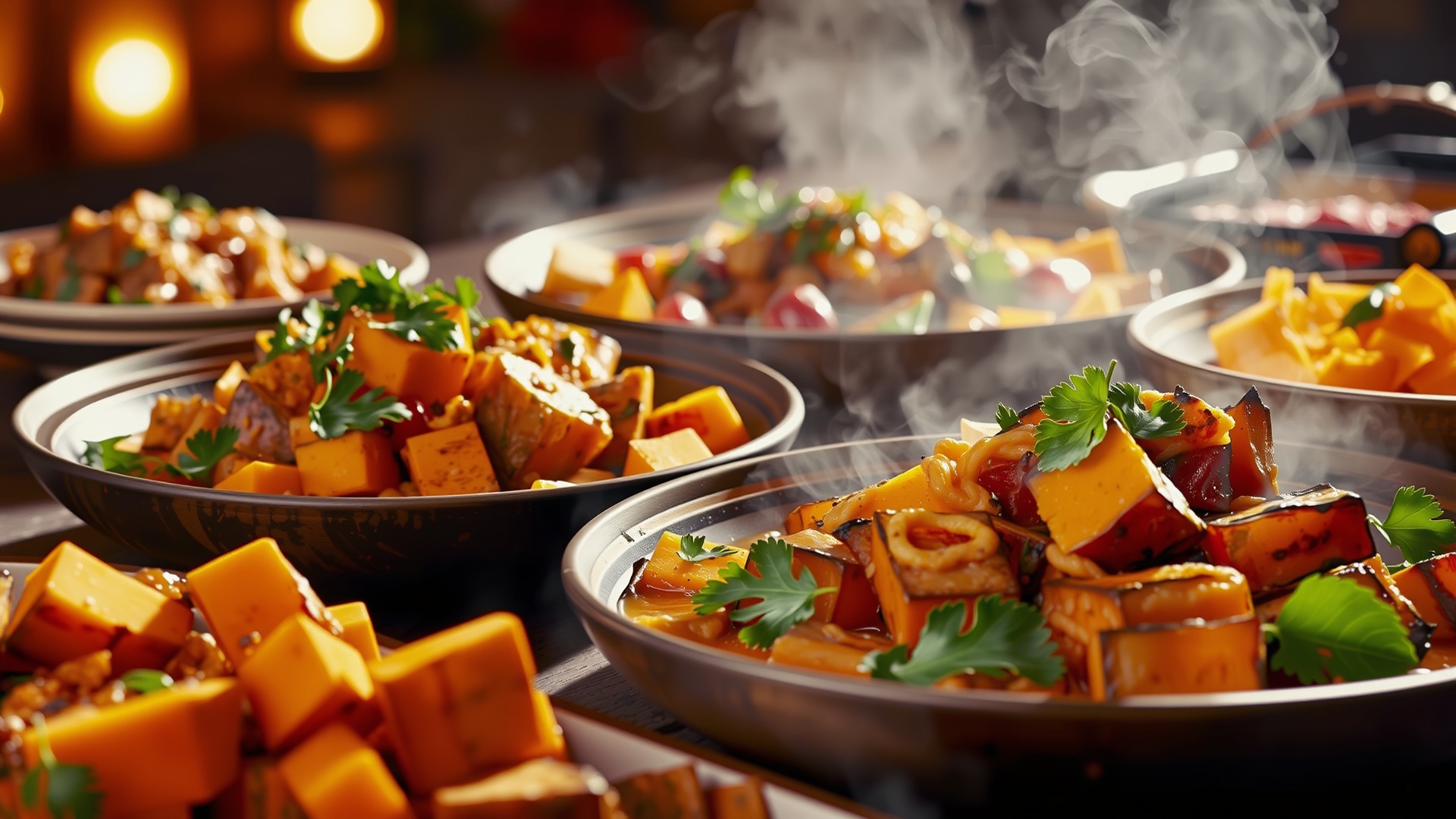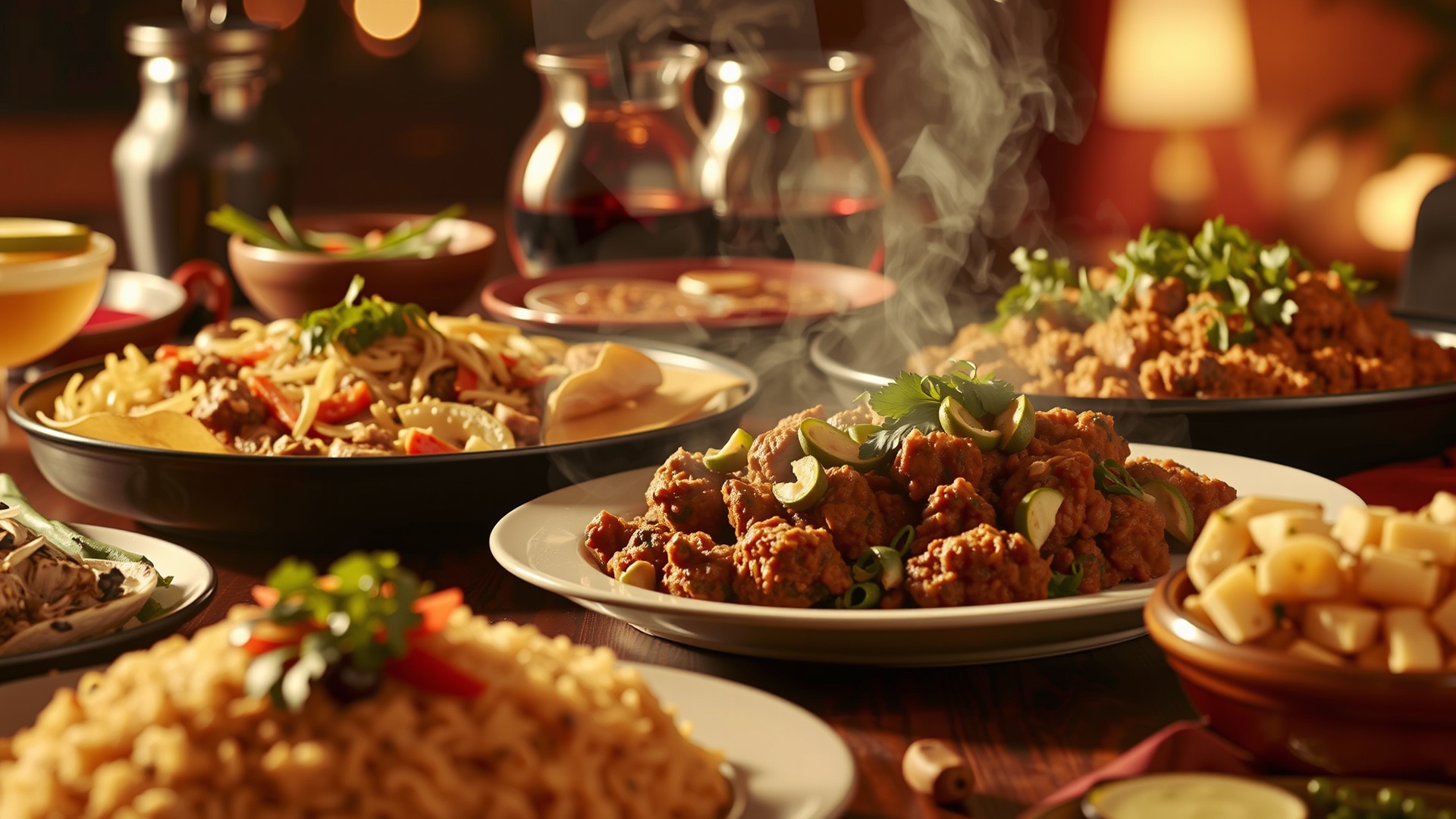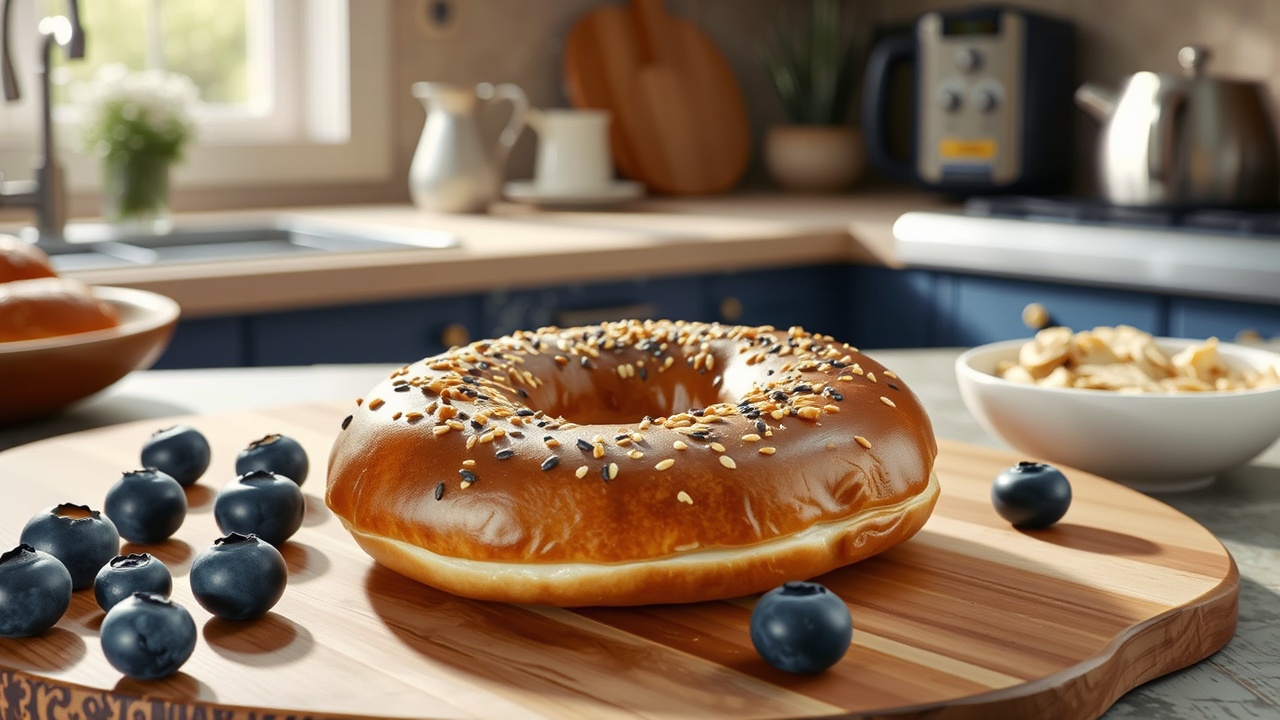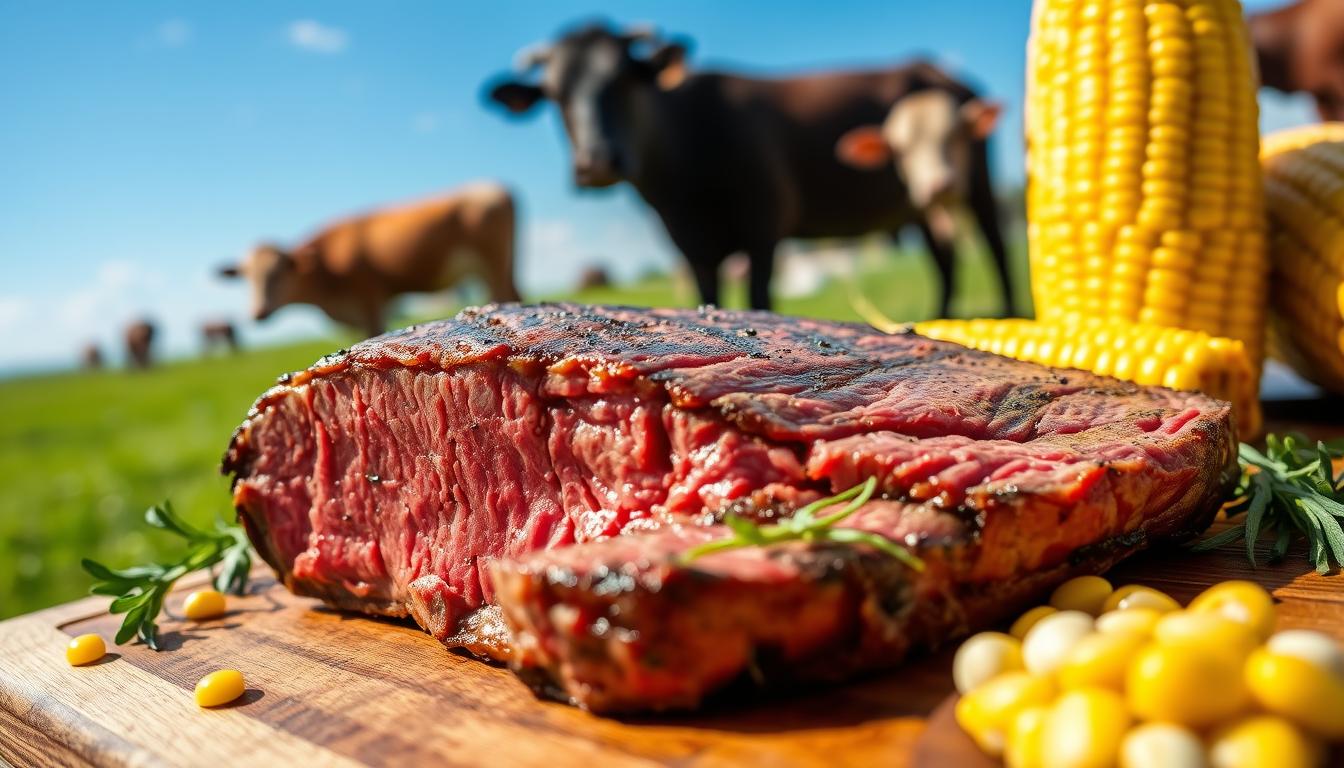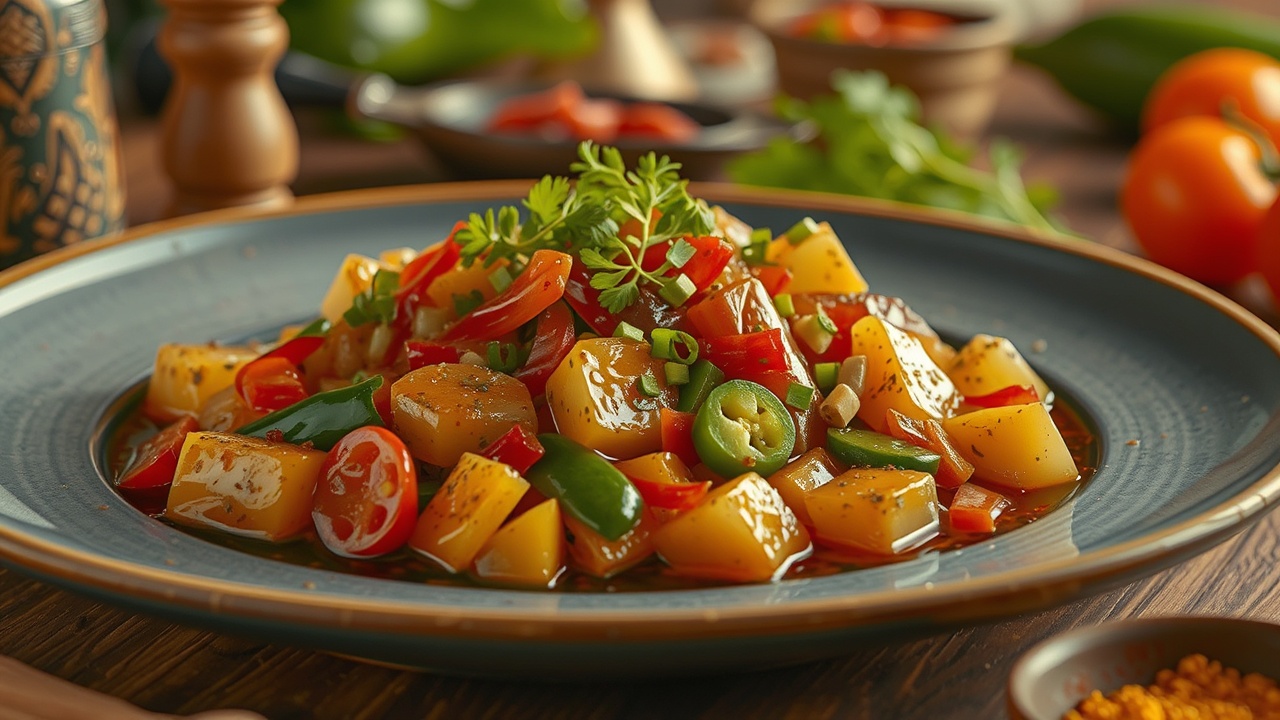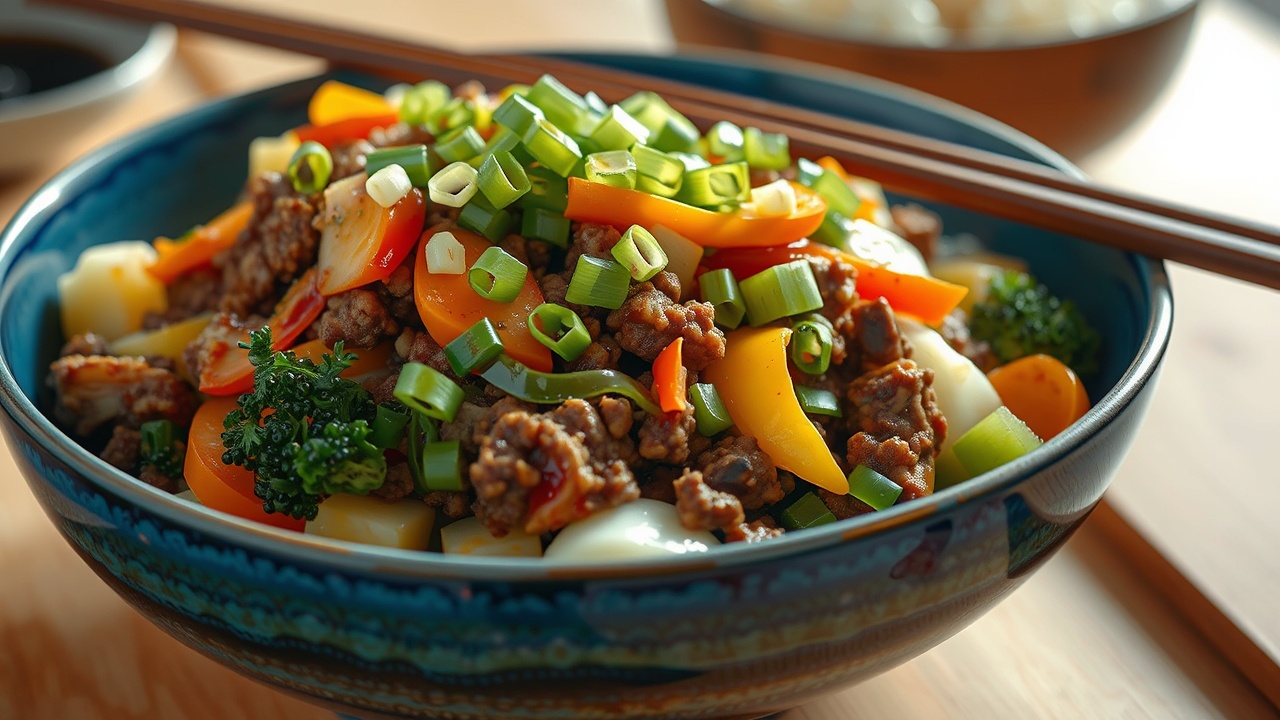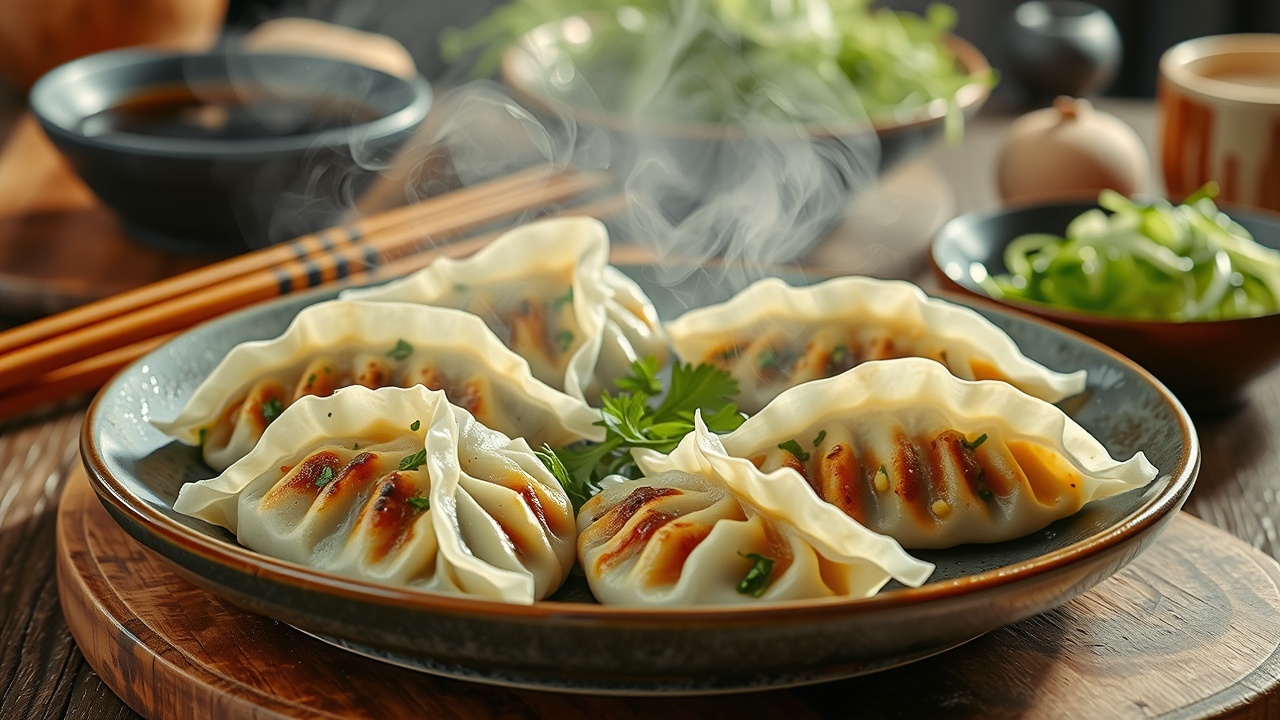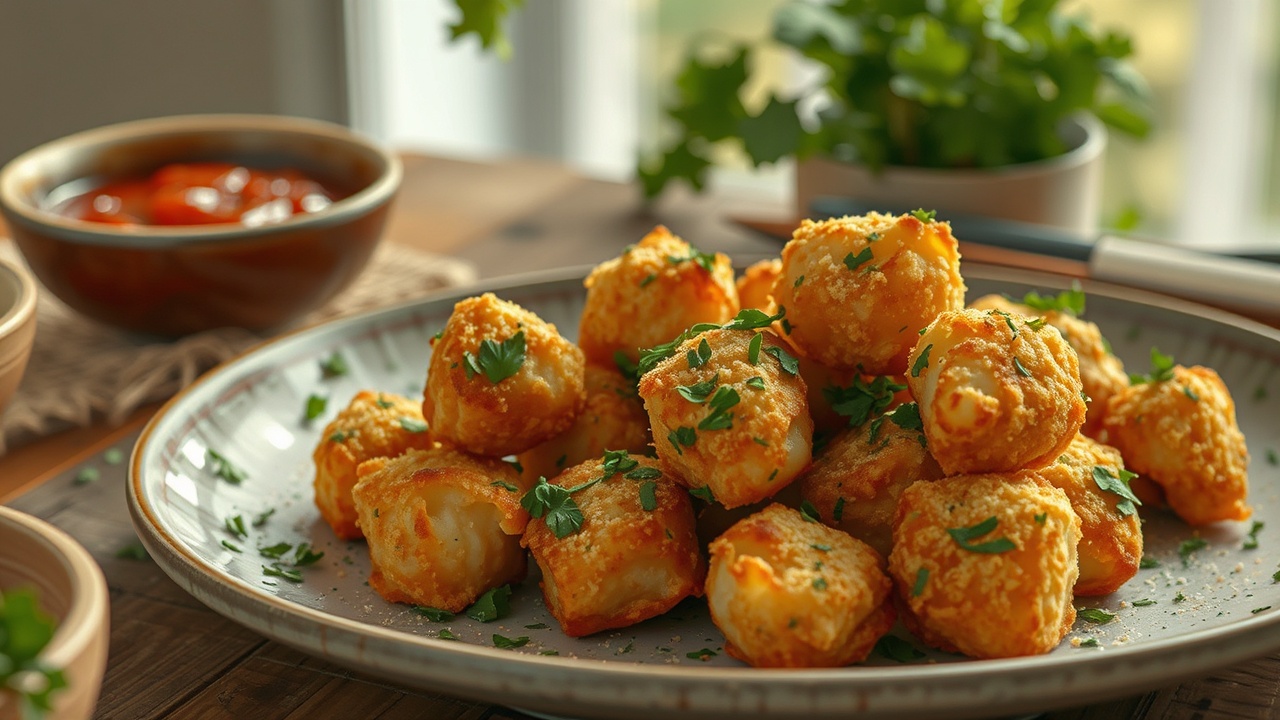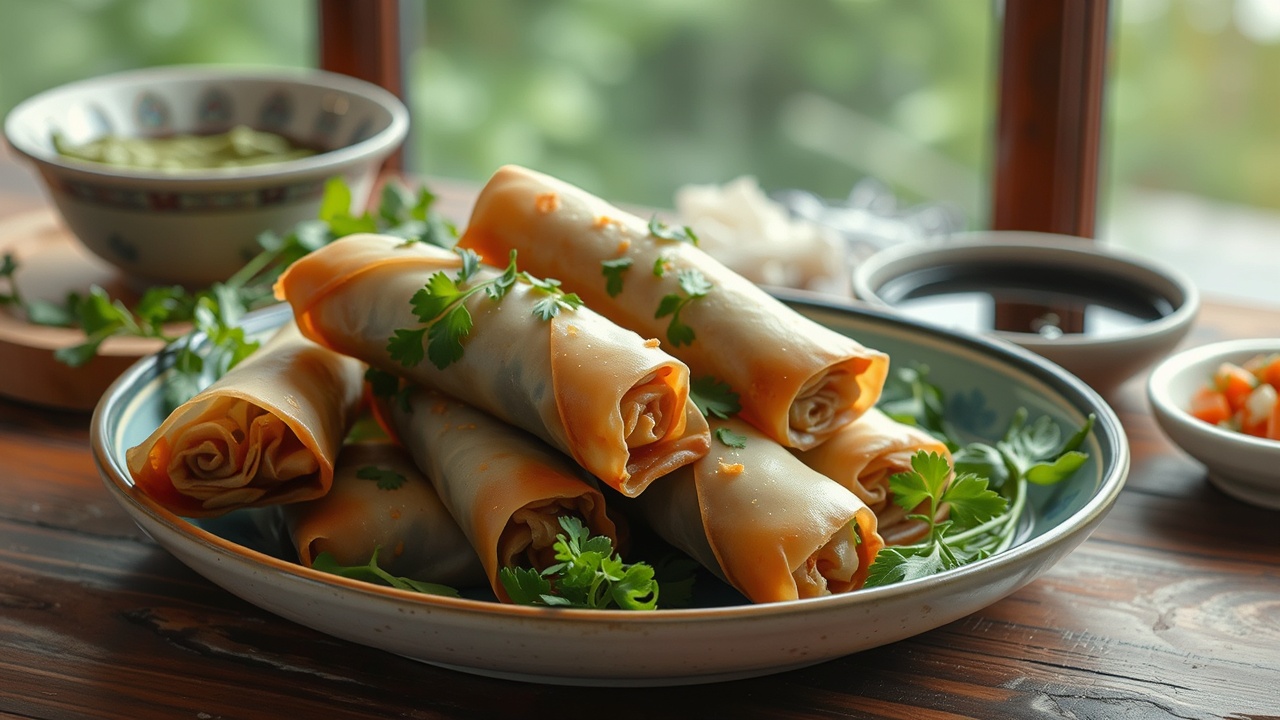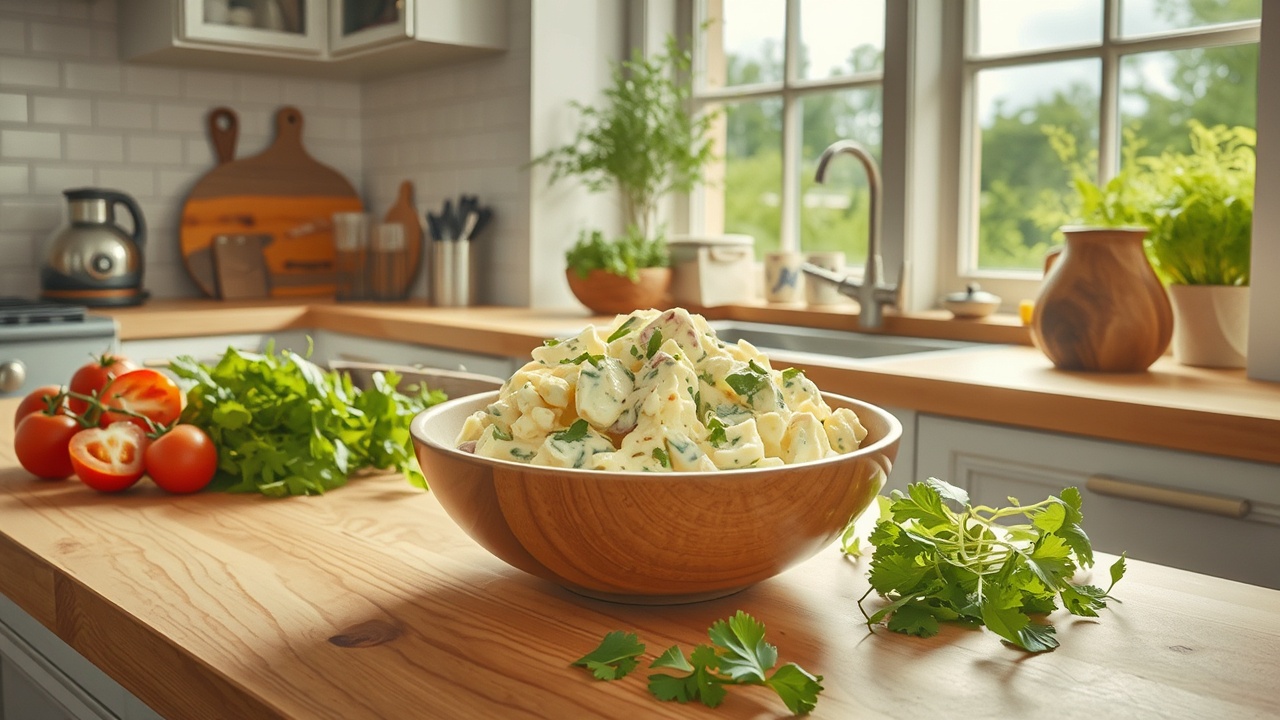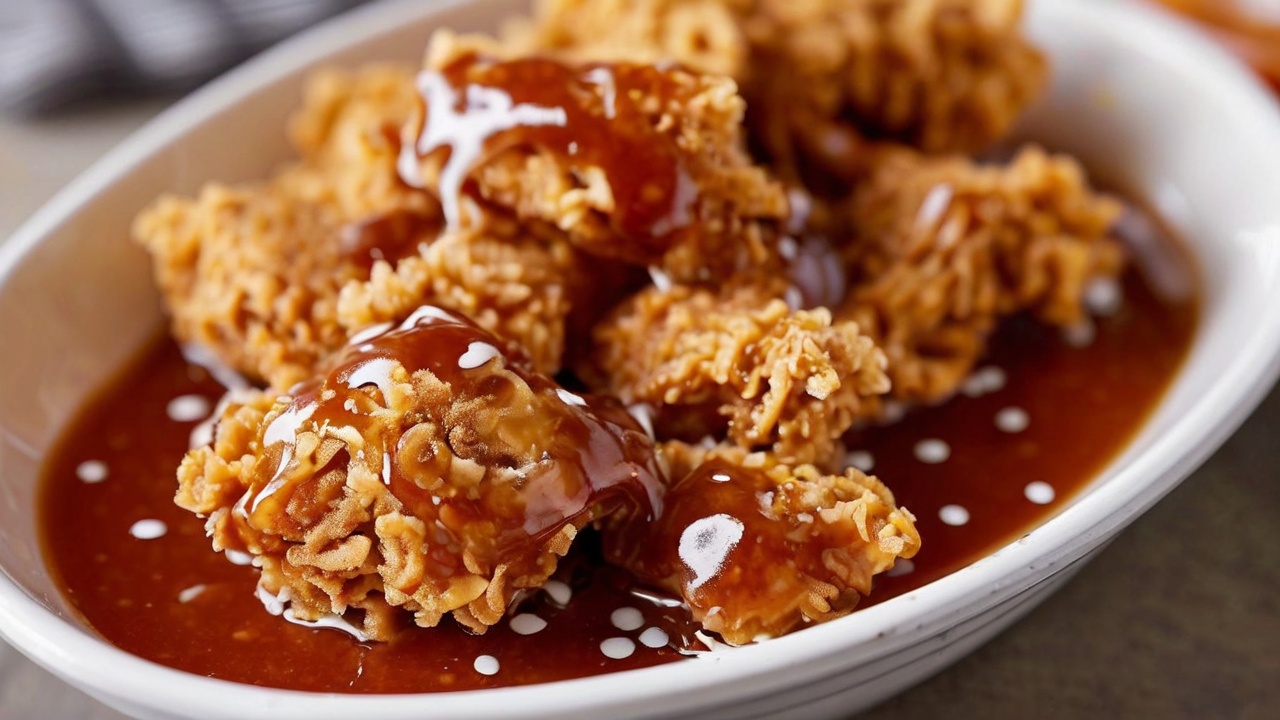Spring rolls are a well-known and loved food, so they are very versatile often seen in Asian cuisine. These golden crispy rolls are stuffed with everything from vegetables to meats and can be eaten as appetizers, snacks, or even a maincourse. Although there are several other kinds of spring rolls, pork spring rolls are not only the most popular but also have a moreinha-filled with meaty deliciousness. The marriage of soft pork, crunchy vegetables and aromatic herbs rolled up in a crispy rice paper shell is an ideal morsel to dip into a tangy-savory sauce.
This recipe is how to make pork spring rolls with all the simple ingredients & easy steps! This recipe concentrates on the foundation of one other spring rolls that could create flavorsome and fuss-free spring rolls.
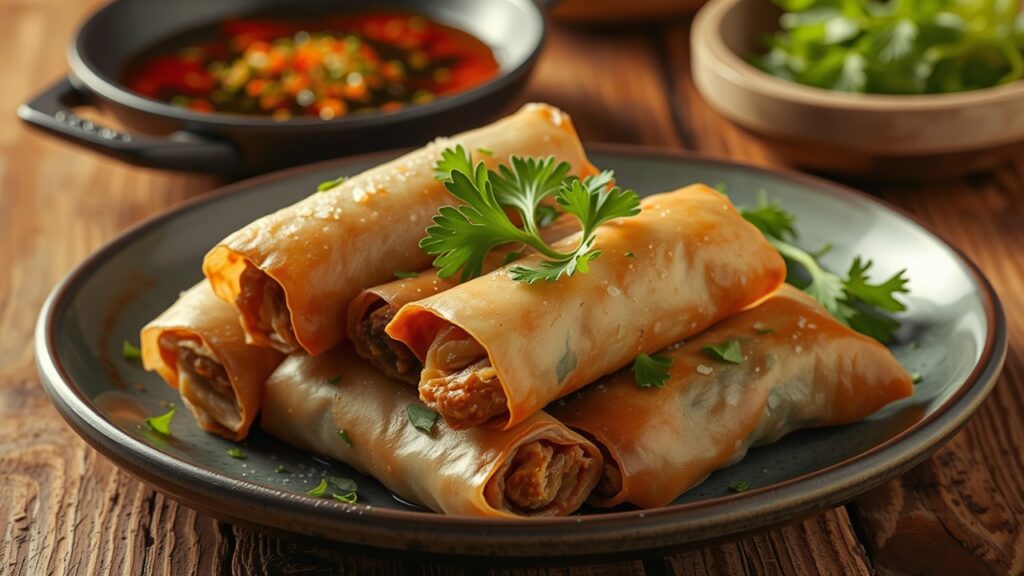
Ingredients for Pork Spring Rolls:
For the filling:
- 1 pound (450 grams) ground pork (or use minced pork instead)
- 1/2 cup grated carrots
- 3/4 cup finely shredded cabbage
- ¼ cup chopped green onion (scallion)
- 2 cloves garlic, minced
- 1 tablespoon ginger, grated
- 2 tablespoons soy sauce
- 1 tablespoon oyster sauce
- 1 teaspoon sesame oil
- White pepper (or black pepper) 1/2 teaspoon
- 1/4 teaspoon salt
- 1 tablespoon of vegetable oil (for cooking)
For wrapping:
- 12-15 wrappers for spring rolls (flour or rice paper, according to taste)
- Hot water (to soften rice paper wrappers)
For frying:
- Oil (for frying) vegetable
For dipping sauce (optional but highly recommended):
- 1/4 cup hoisin sauce
- 1 tbsp peanut butter optional
- 1 tablespoon rice vinegar
- 1 tablespoon soy sauce
- 1 teaspoon sriracha or chili paste (optional for heat)
Method for Pork Spring Rolls:
1. Preparing the Pork Filling
Preparing the filling is the first step in making pork spring rolls. Begin by adding 1 tbsp of vegetable oil to a large skillet or wok at med-high heat. Heat the oil, then add ground pork to the pan and break apart with a wooden spoon or spatula. Add the pork, cooking until browned and cooked through, about 5-7 minutes. You want a lean, flavorful filling, so do remove any excess fat.
After the pork is cooked, we add the minced garlic and grated ginger into the pan. Continue stir-frying for another 1-2 minutes until the garlic and ginger are aromatic and just tender.
Then stir in the pork with the grated carrots, shredded cabbage and chopped green onions. Add everything to the pan and stir together for a further 3-4 minutes until the veg is tenderised but not super soft still crunchy. These veggie “stuffings” give the spring rolls not only flavor but also some gorgeous color and texture as well.
Add soy sauce, oyster sauce, sesame oil, white pepper and salt for seasoning the filling. Remove from the heat an stir to combine. Cool the filling for approximately 10 minutes. If you want to cool it faster, feel free to move to a bowl. After cooking the filling, it needs to cool down before you use it to avoid ripping your rice paper wrappers while rolling your spring rolls.
2. Preparing the Spring Roll Wrappers
Traditionally there are two wrappers for spring rolls: rice paper (which is soft and pliable) and flour-based (thick, crispy, deep-fried wrapper). Spring rolls are most likely made with rice paper in the Vietnamese style, whereas Chinese spring rolls are more often wrapped up with flour-based wrappers. We will use rice paper wrappers in this recipe because they are simple to work with and create a light, crunchy texture when fried.
Soak rice paper wrappers in warm water by placing them in a shallow dish of warm water. Dunk a rice paper wrapper into the water until completely submerged, about 10-15 seconds or so. Don’t stay too late, they may become soft and brittle very tough. After they have softened, take it out of the water and put flat on a clean surface this could be a cutting board or clean hand towel.
You want to be quick but careful about it because after the rice paper softens, it becomes sticky. You do not want to leave it too long else it will rip when you try to fold it.
3. Assembling the Spring Rolls
When your filling is cooled, and you are prepared to fill the rice paper wrappers to make pork spring rolls. Grab a softened rice paper wrapper and place it down in front of you or on your work surface. Add 2 tablespoons of pork filling to the center of each wrapper. Fill fairly lightly, otherwise the rolling is tricky to do and can tear wrappers.
Once the rice paper has softened; fold in the top and bottom of the rice paper (over your filling) and roll up tightly (but not too tight that it breaks), starting from bottom, pulling all the way to fit in. The rice paper should stick to itself — you must have a tight seal. While rolling, be gentle yet firm to maintain the structure of the spring roll.
Keep doing this with the other wrappers and filling. It should yield around 12-15 spring rolls, depending on the size of your wrappers.
4. Frying the Spring Rolls
Now that you have your whole spring rolls lined up, those puppies are ready to be fried. In a deep frying pan or wok, heat vegetable oil over medium-high heat. The oil has to be deep enough to submerge the spring rolls, at least 2-3 inches. The oil is hot when a piece of the wrapper dropped in it sizzles almost instantly.
Gently lower 3-4 spring rolls at a time in to hot oil. Another important point is not to overcrowd, since it will allow the oil temperature to drop down and the spring rolls won’t fry evenly. Once the oil is hot, fry the spring rolls for about 3-5 minutes each until golden yellow and crispy on all sides. Mobility so that all parties are evenly cooked, use pliers or a slot spoon.
When the spring rolls become golden and crispy, take them out of the oil and onto a plate with some paper towels so they can absorb any excess oil.
5. Preparing the Dipping Sauce
PERFECT FOR THE PORK SPRING ROLLS FRY YOUR Making Process. In a small bowl, mix together hoisin sauce, peanut butter (if using), rice vinegar, soy sauce and sriracha or chili paste (if using). Stir until smooth. The peanut butter gives the sauce a creamy richness, whereas using rice vinegar balances out the salty hoisin sauce. Sriracha or chili paste — Use less for a milder dish and more for more spice!
6. Serving the Pork Spring Rolls
When the spring rolls are fried and crispy, serve hot with the dipping sauce on the side. We can also serve with some fresh herbs like cilantro or mint to garnish the spring rolls. Alternatively, you can also serve pickled vegetables on the side with spring rolls as they have a tangy flavor that will go well with the richness of pork.
Spring roll with pork is best served hot and crispy directly after frying them. Still, if you don’t finish it all at once, you can keep it in the fridge for 2 days max, in an airtight container. FRY THEM AGAIN TO REHEAT: The best way to re-heat them is by frying them again for a minute or 2, to get back the crispiness.
Tips and Variations:
- Ground pork: The recipe calls for ground pork but you can substitute it with chicken, beef or shrimp! For a vegetarian option just add tofu or use mushrooms for stuffing.
- Oven Baked Spring Rolls: Need a healthier option than frying? Just put the spring rolls in the oven. Heat the oven to 400F (200C), spread the spring rolls on a parchment lined baking sheet, brush with oil. Bake for 15-20 mins or until crisp and golden, turning midway through.
- Make them Ahead from your Spring Rolls: You can prep the spring rolls in advance and also put them in the refrigerator for as much as few hours before frying. These are ideal for having guests over, or preparing some meals.
Conclusion
Crispy, crunchy, and so flavorful, pork spring rolls are the perfect appetizer or main course. This straight forward recipe yields a platter of spring rolls stuffed with ground pork, vegetable and herb all wrapped in crunchy rice paper. Served with a shortplate of a savory sauce, these spring rolls will be your new go-to. These pork spring rolls will impress at your next dinner party as an appetizer or hot out of the oven at home while you’re eating a casual weeknight meal with that unbeatable crunch and umami filling.

